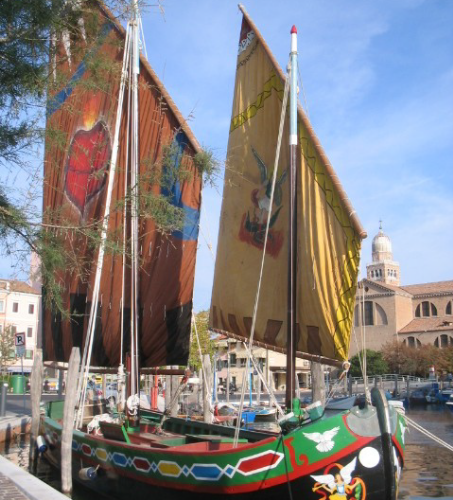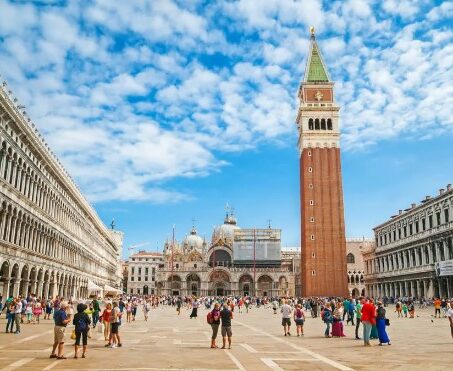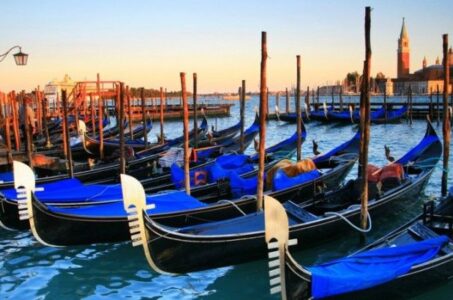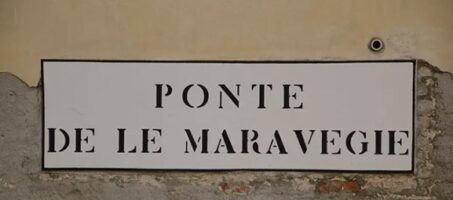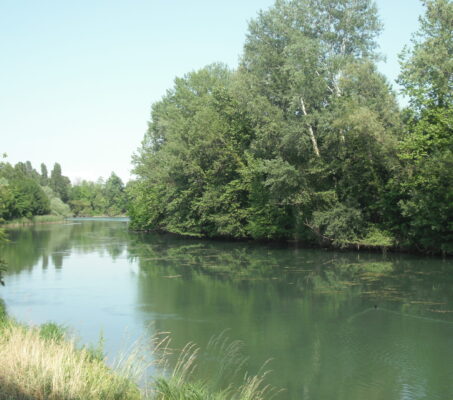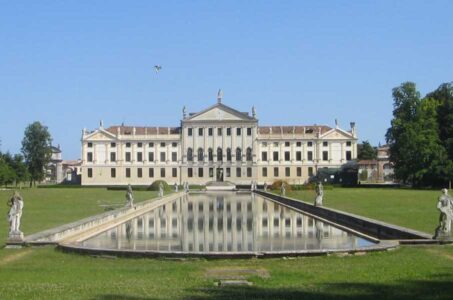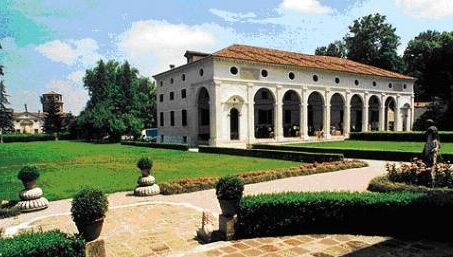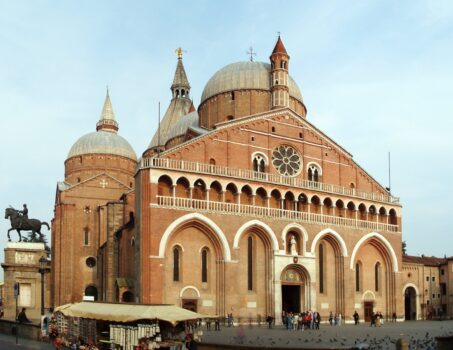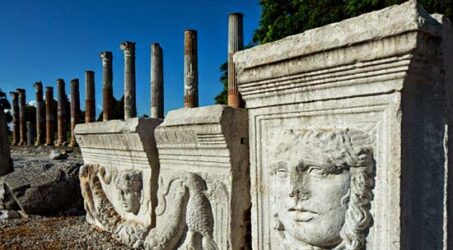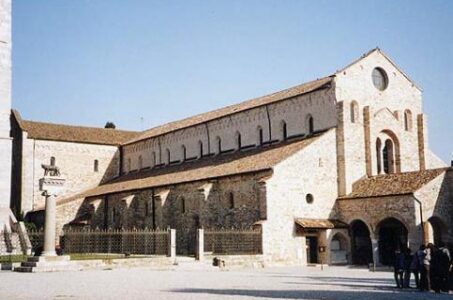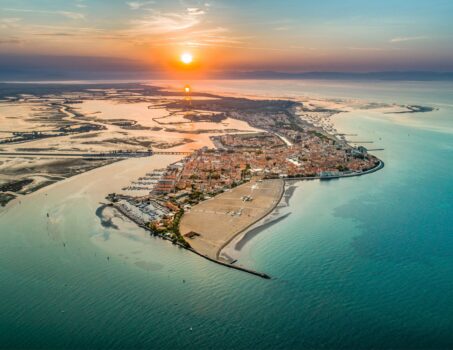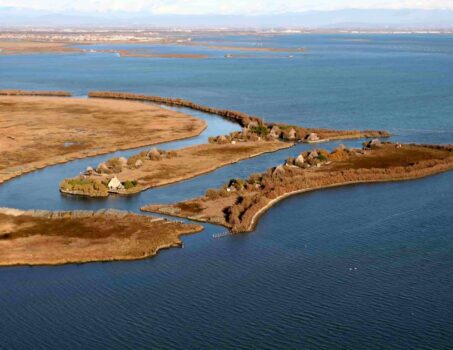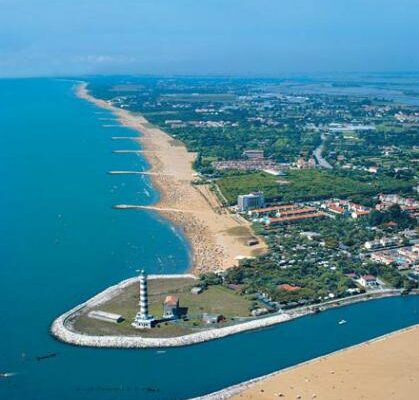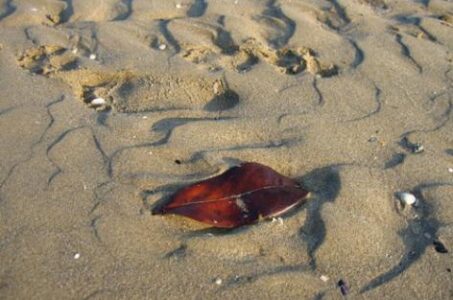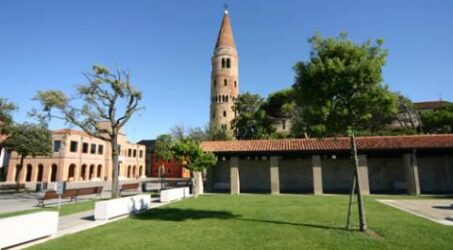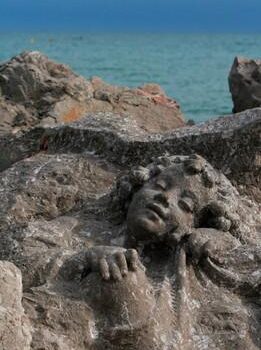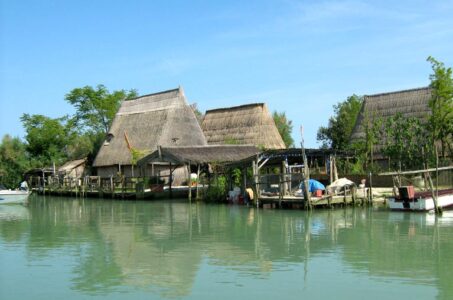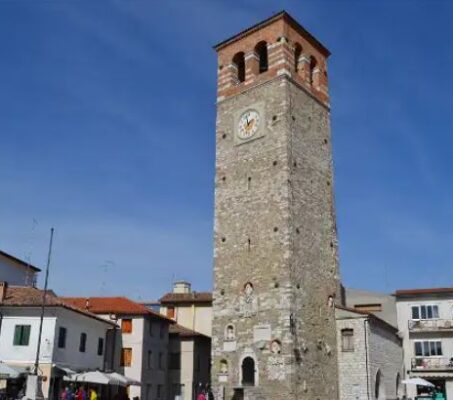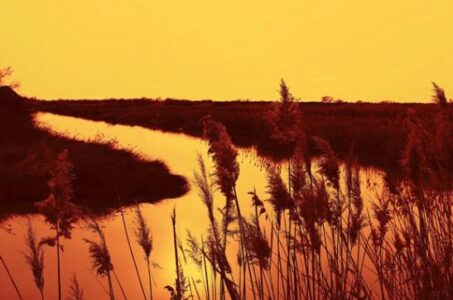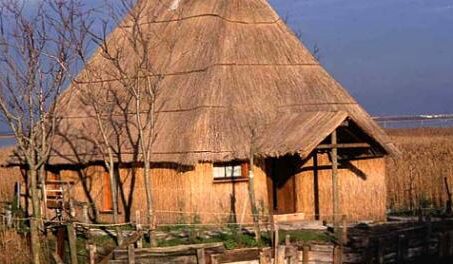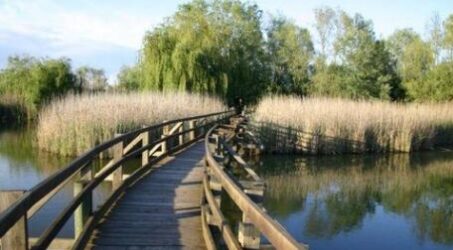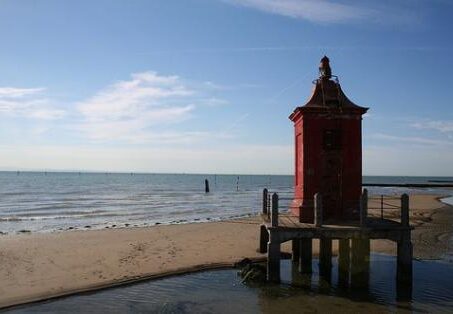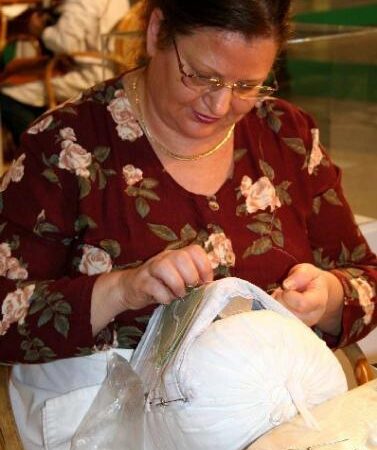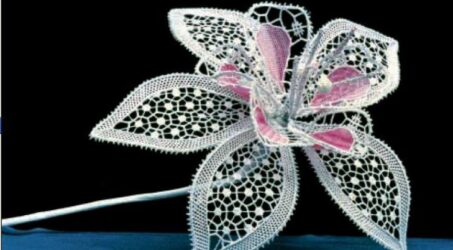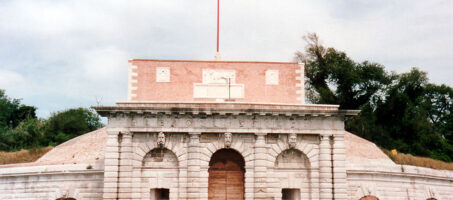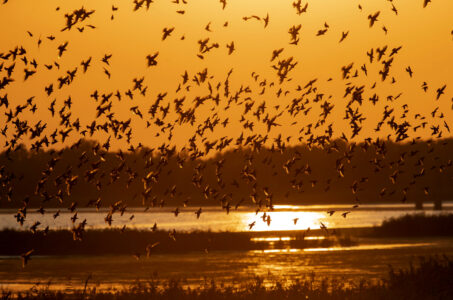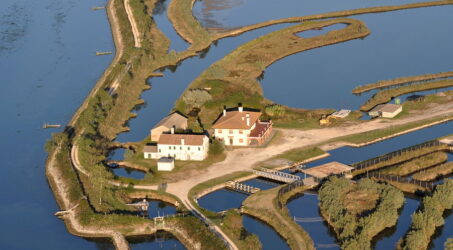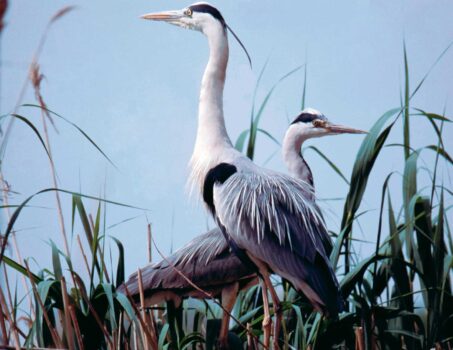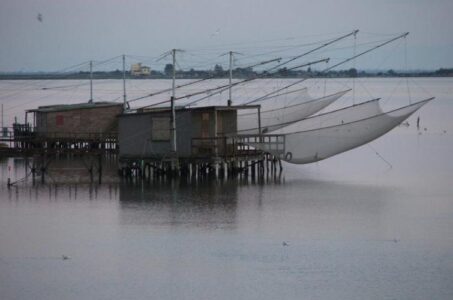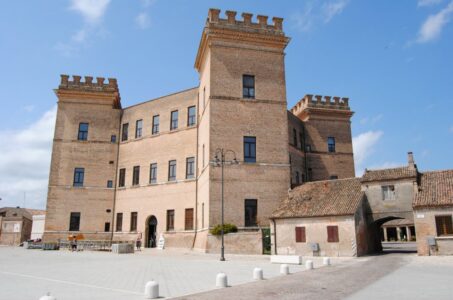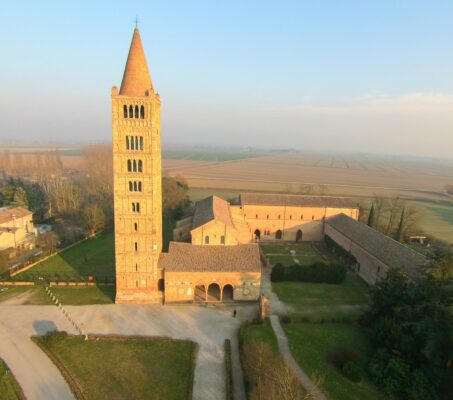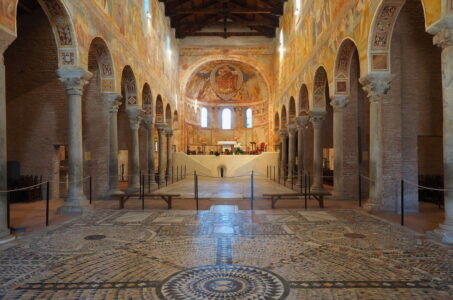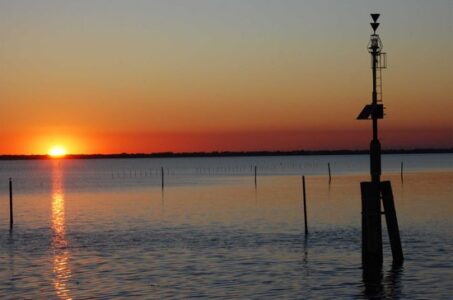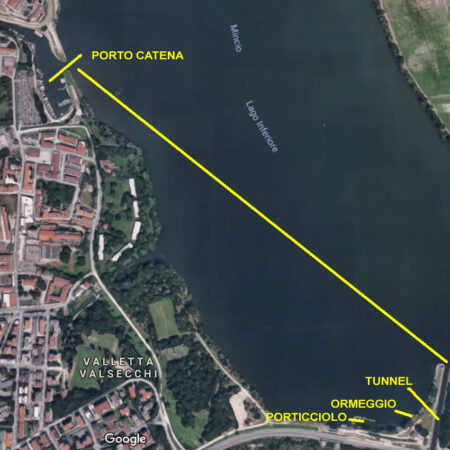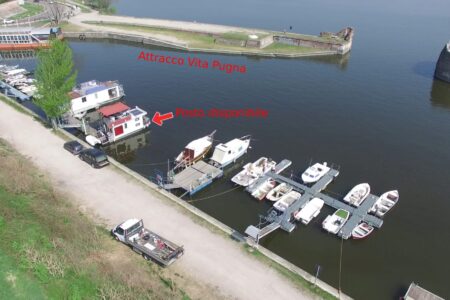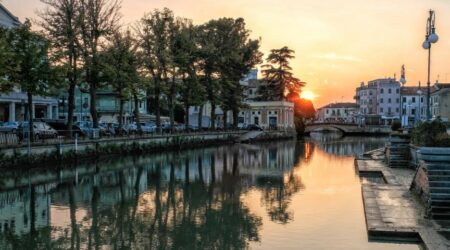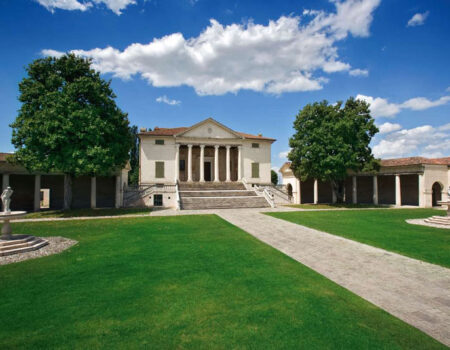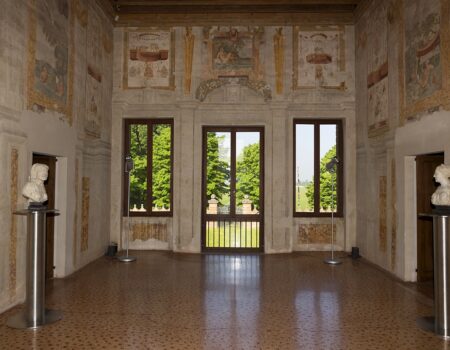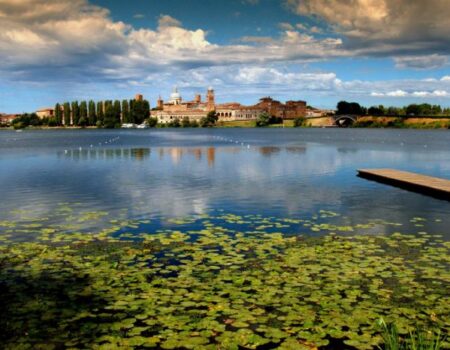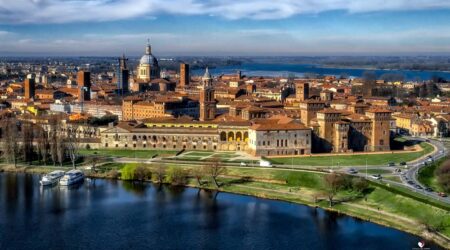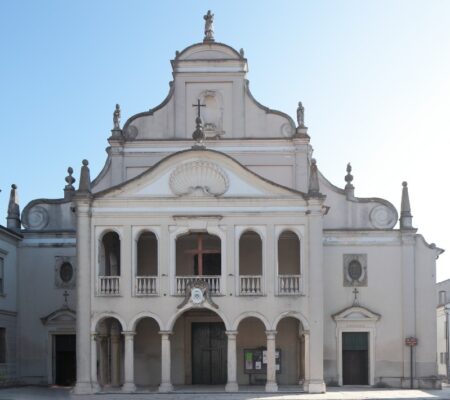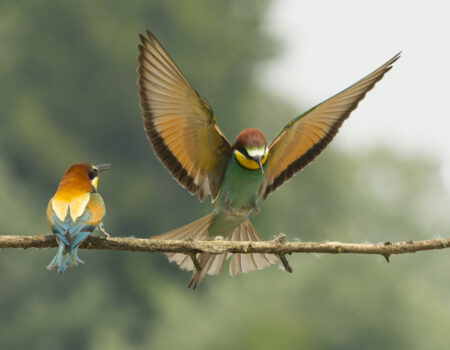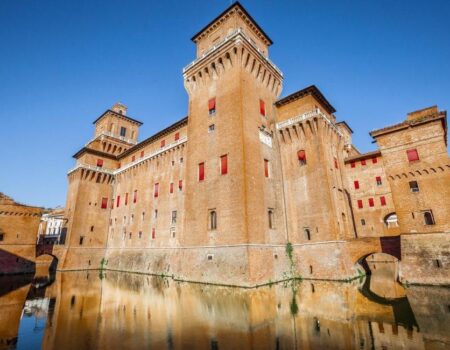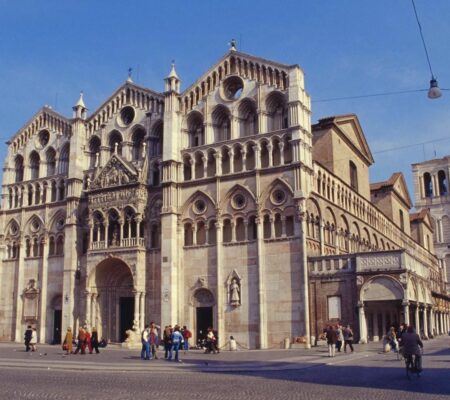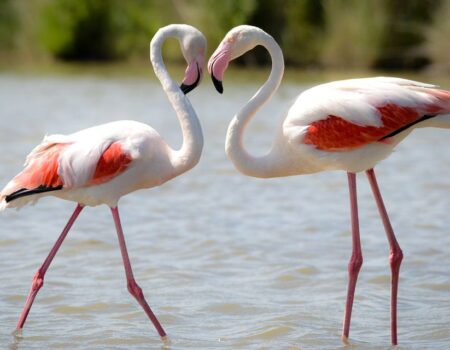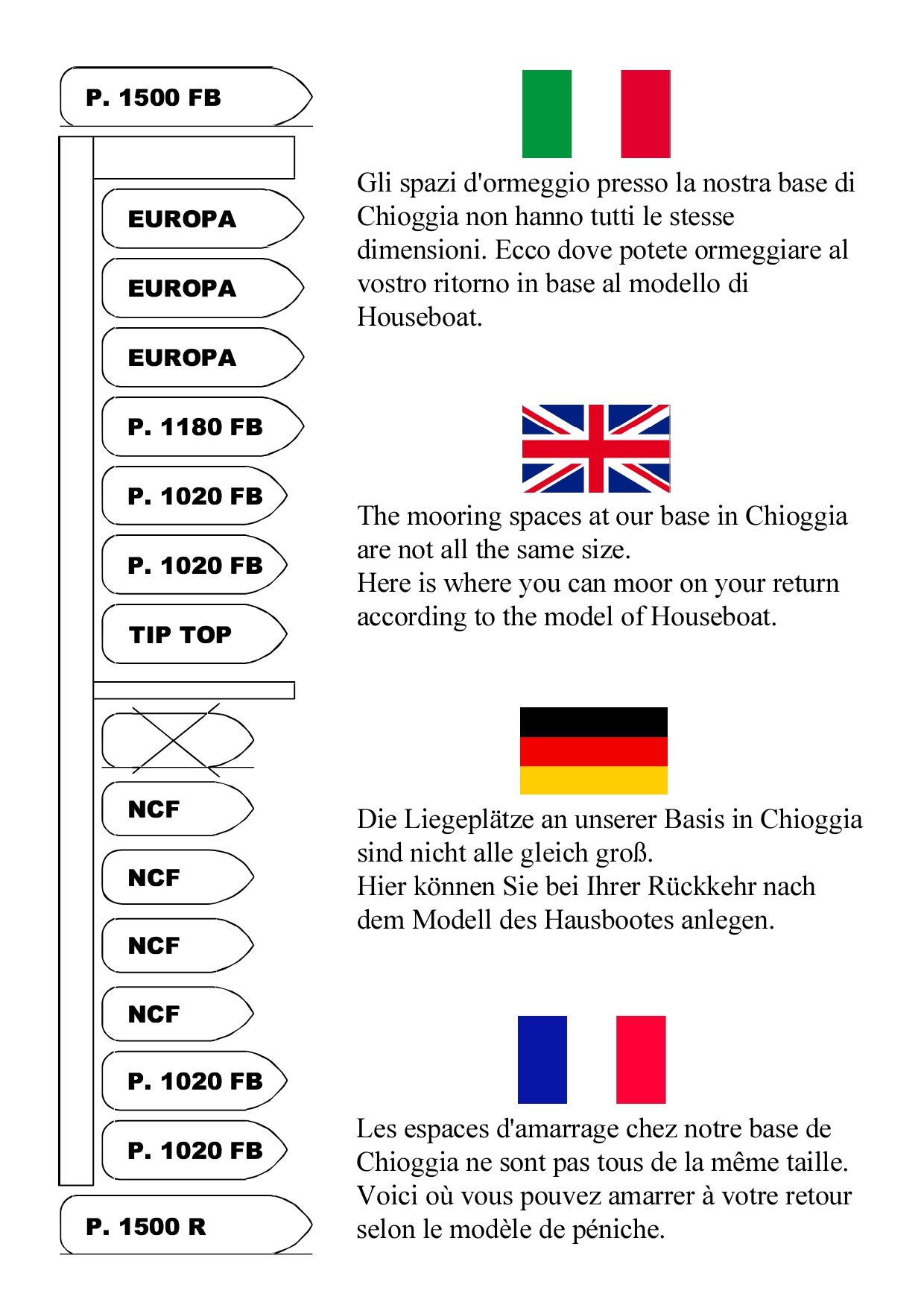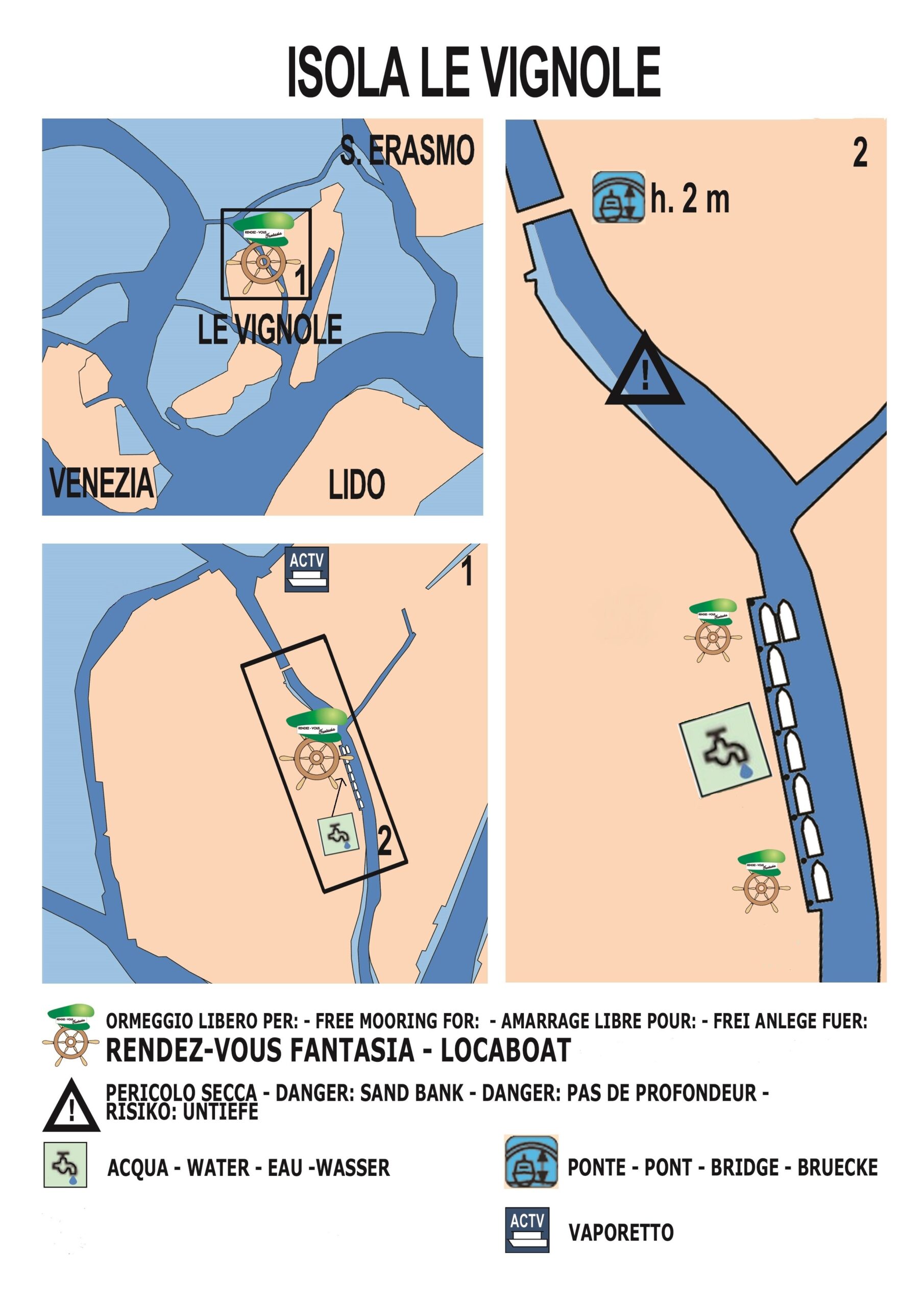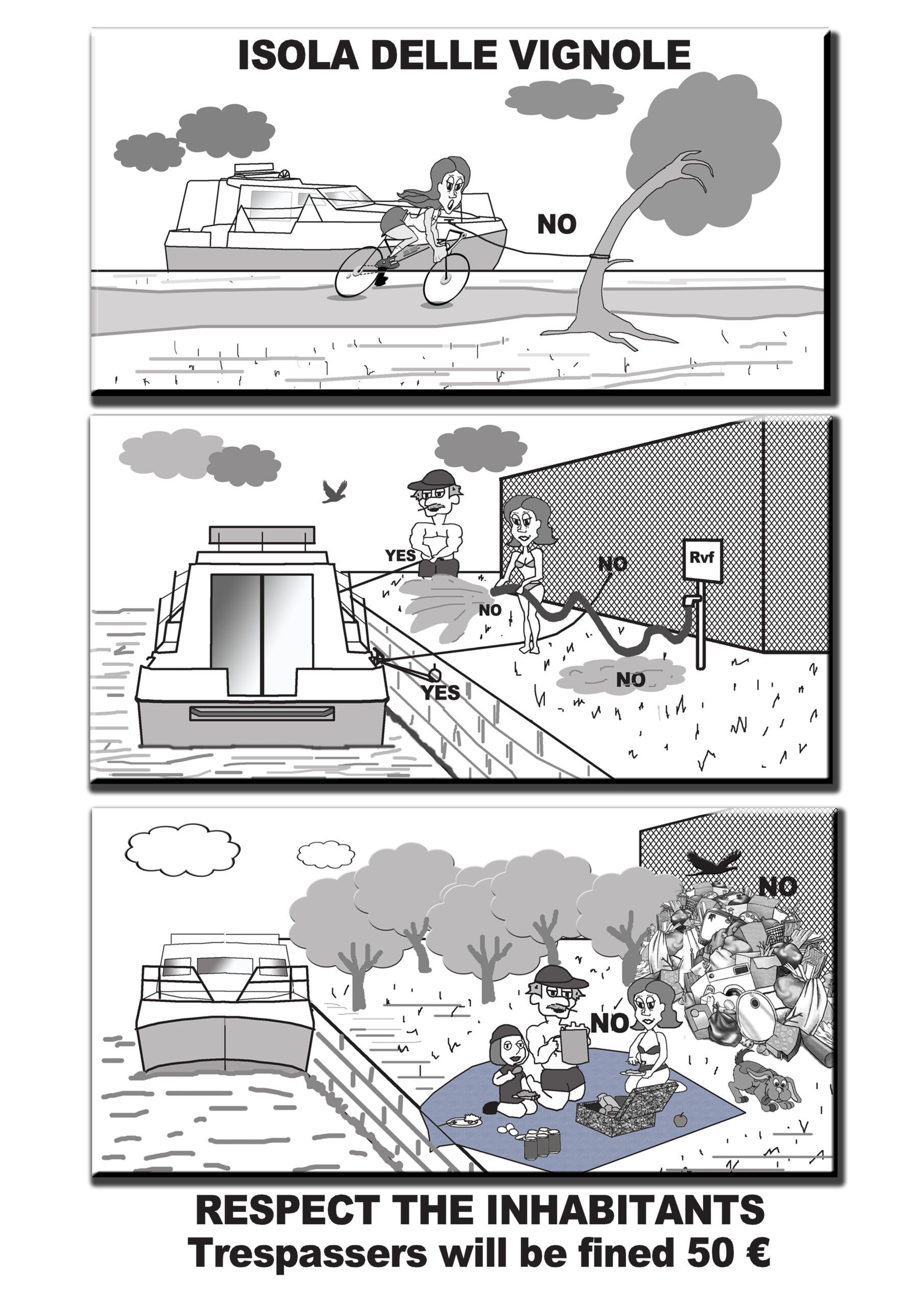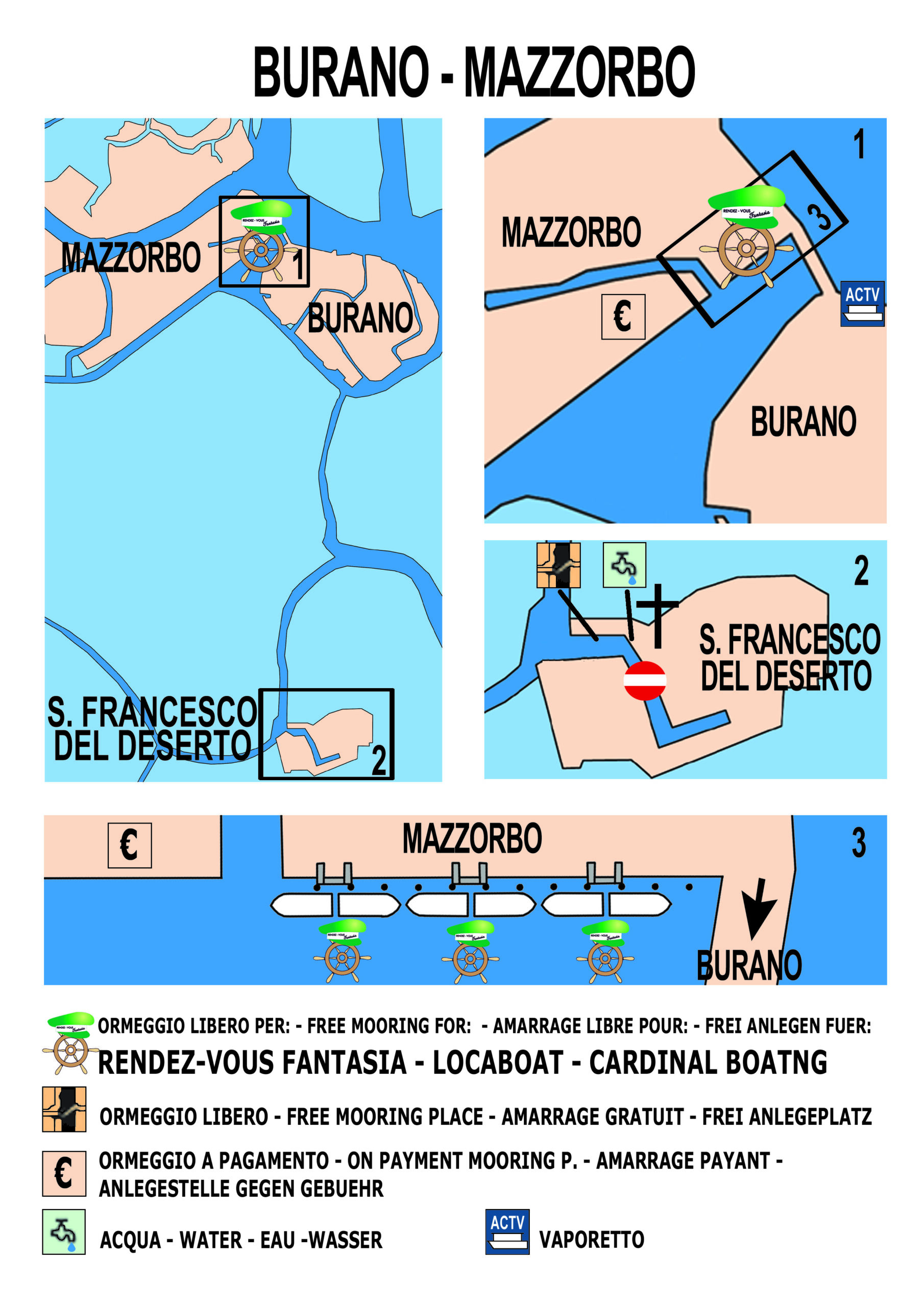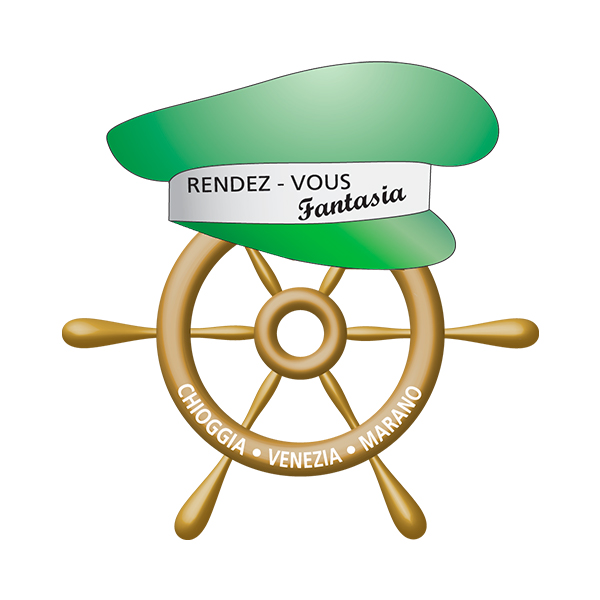- Welcome!
- Assistance
- Return of the Boat
- Advices
- Itineraries: to remember
- Venice Lagoon
- Venice Lagoon: tourist info
- Sile River
- Sile River: tourist info
- Brenta Canal
- Brenta Canal: tourist info
- Grado and Marano Lagoon
- Grado and Marano Lagoon: tourist info
- The 3 Lagoons (a)
- The 3 Lagoons (a): tourist info
- The 3 Lagoons (b)
- The 3 Lagoons (b): tourist info
- Po Delta
- Po Delta: tourist info
- Mantua and Ferrara
- Mantua and Ferrara: tourist info
- Base Chioggia
- Mooring Vignole
- Mooring Burano
- Marinas
- Locks and Swing Bridges
- Useful Links
Hello Captain,
Welcome aboard our houseboats.
We will do our best to make your stay unforgettable.
Please take the time to read this CAPTAIN’S HANDBOOK, you will find a lot of useful information and tips. It is the result of our personal experiences, the feedback given by our clients over the years and is constantly updated.
In our CAPTAIN’S HANDBOOK you will find all the information about itineraries, timetables of locks and swing bridges, the tide calendar and the possibility to view the weather and much more.
However, if we have forgotten a detail or if something is unclear, please do not hesitate to ask us.
Your suggestions and experiences are always welcome!
Our team will be happy to help you.
We wish you a wonderful trip with Rendez vous Fantasia!
ASSISTANCE
OFFICE: (0039) 0415510400
Number also enabled for WhatsApp instant messaging
From Monday to Saturday, from 9:00 to 12:30 and from 15:00 to 18:00
The following numbers are to be used only in cases of EXTREME URGENCY:
LAURA: (0039) 3205720465
Seven days a week from 8:00 to 12:30 and from 14:00 to 18:00
After 18:00 send an SMS or leave a message on the answering machine. Your message or call will be answered the following morning.
🚩
If the problem to your boat still allows you to sail, repairing are done only on dry land (eg. Fusina, Portegrandi, Cavallino). The technician will agree with you a meeting point.
Useful numbers
FIRST AID 118
CARABINIERE 112
POLICE 113
FIRE BRIGADE 115
REVENUE GUARD CORPS 117
COASTGUARD 1530
RETURN OF THE BOAT
The boat must be free between 8.30 and 9.00 am on the last day. Prepare your luggage and if necessary clean it on time.
Please respect the times.
Thank you.
RETURN ON SUNDAYS
Only possible by prior agreement. The boat must be free between 16.00 and 18.00. After this time the return will be postponed to Monday morning between 08.30 and 09.00.
EARLY RETURN
If you choose to return the boat before scheduled time (e.g. for personal reasons), please inform the base in time. The base is not open outside the departure days.
LATE RETURN
In case of a late return, the base may charge you with a half or a full day of your hire price.
IT IS FORBIDDEN:
• enter the canals of Venice, Giudecca, Murano, Burano, Torcello and Lido. These islands can only be circumnavigated;
• in the above named islands, moor in makeshift or unauthorized places;
• navigate at night, with bad weather and at sea to unauthorized boats.
No insurance will cover any fines, forced removal of the boat and recoveries of boats drifting for navigation at risk.
YOU ARE AUTHORIZED:
• to send away all boats not belonging to Rendez vous Fantasia and Locaboat from our private moorings in Burano and Le Vignole (unauthorized boats: Le Boat and all other boats);
• to contact, if necessary: POLICE (113) and CARABINIERI (112).
IT IS RECOMMENDED TO:
• place the garbage in the appropriate bins;
• keep the animals on a leash;
• keep clothing appropriate to the place where you are;
• avoid disturbing noises and respect rest times, close to inhabited areas or boats.
PLEASE REMEMBER:
• it is recommended to check the weather forecast and in particular the wind forecast. Here are some links where you can check: ilmeteo.it ; meteoam ; windy ;
• boats are delivered with a full diesel tank (autonomy for more than 40 hours of navigation). In case of need you can contact the base BEFORE fueling. We will give you information on where and how to do it. If we are not contacted or contacted later, you will not be entitled to any refund;
• technical and repair interventions, except in the case of non-operation of the engine, are made on the mainland (no islands). Fusina and Portegrandi are the closest places to the islands of the lagoon;
• toilet unclogging interventions, and repair of the bow thruster are subject to payment;
• losses, damage to the terrace and sundeck due to collisions with bridges and locks, removal and detachment from sandbanks and damage to the propeller are NOT covered by any insurance.
For the boats P.1020FB, E.400, E.600:
Please remember that it is obligatory in order of the Italian legislative decree n. 171/2005 to keep in the boat and to show to the police force in case of checking, the location contract that You subscribed with Your travel agency.
Referring to the ORDINANCE number 93/2007 Magistrato alle Acque:
– The navigation in the lagoon canals must take place with a distance of at least 3 meters from the briccoles and from the signalling groups.
– No mooring and no stop nearby: briccoles, bollards, signalling groups, and bank not organised for mooring.
– The navigation in shallow water or outside the navigable canals is forbidden.
– All the sailor must reduce the speed of the boat until the minimum to contain the undulatory motion and avoid danger situations nearby yards in progress or during the meet of small boats, rowing boats, full boats, medical transports, funeral transports and in general boats with emergency/alarm system in use (source of light and acoustic).
– All the sailor must reduce the speed of the boat nearby islands, banks and shoals, sandbanks, to avoid possible damages and erosion owing to the undulatory motion adopting a general speed limit of 7 (seven) kilometres/hour where there aren’t indicate other limits.
– The alteration and the tampering of the banks (naturals and artificials) through: mooring and/or anchorage, camping activity are forbidden.
– It’s forbidden mooring and/or dock to the wharfs reserved for the vehicles of the public services;
It’s necessary maintain an adequate distance to not camper the manoeuvres of the vehicles of the public services.
– It’s necessary take always great care and follow the speed limits indicated.
Any insurance covers incidentals sanctions come from the transgression of the above-mentioned articles.
-
The water level in the lagoon and in its canals (not regulated by locks) is subjected to tidal variations. Tidal range is about 1 meter and it is very important to keep this measure in mind while mooring your boat. Precautions to take:
a. Check the depth of water before mooring in order to avoid to run aground with the low tide;
b. Leave your ropes loose enough to let your boat free to wave according with tides.
c. Set fenders properly to defend your boat both with high and low tide. If you do not have any tide calendar on board, estimate the tide trend looking to the seaweed on the mooring piles/walls. - The Venice Lagoon can be navigated only in specific areas of the canals, marked by wooden poles or bollards named “BRICCOLE” (in English: Dolphin). Pay attention and look for the entrance to the canal; it is marked by a particular kind of bollard, called DAMA, composed by several poles together, one of them is 70 cm higher than the others. The correct side to take during the navigation is clearly numbered and there are white boards visible on the bollard posts. Keep 5-20 meters distance from bollards.
- Swell can be sometimes very strong in the lagoon; that is why it’s always better to moor in safe and sheltered places. Docks are the only possible moorings in Venice (San Giorgio and Sant’Elena are the coziest). It is absolutely forbidden to navigate the Grand Canal in Venice and the Gran Canal in Murano. With perfect weather conditions and calm water it is possible (only for authorized boats) to navigate along the coast between 500 and 1500 m. distance.
- Our boats are equipped with engines 40HP and the cruising speed is around 7 knots/hour. Considering the limited power of our engines, we advise you not to navigate if the wind and the water current are particularly strong (with the exception of the Tip Top L model which is equipped with 80HP). If navigation is strictly necessary, despite the bad weather conditions, we want to remind you that manoeuvring is easier if against the tide. If you are in narrow canals or where there is not enough room and you have to moor downstream, it is better to do the manoeuvre by hand.
Draw slowly the bow of your boat up to the bank, search for a hold with the boathook, keep the boat in position also fixing a rope if it can help you and let the stream to turn the boat around till it is alongside the bank. If you wish to stay fix ropes to land. To leave against the tide, let the moorings go, push the boat away from the bank by using the boathooks you have on board and accelerate. To leave downstream but with the bow against the tide, cast the ropes at bow off and push the boat away from the bank; let the current of water to turn the boat as you wish and loose the ropes at stern. Wait until the boat is in the ideal position to leave, cast quickly the ropes off and accelerate forward. - While you are waiting
• To pass the locks: remember to turn the engine off, you will prevent obstructing the filters of the cooling system by the mud coming from the emptying of the lock chambers.
• To pass the swing bridges: if you are downstream, keep far enough from the bridge (at least 50 meters) to avoid to end up crosswise under the bridge. Start the engine only when the bridge is completely open and give power. -
If for inattention or any other circumstances, you get stuck in the mud you have to behave as follow:
The first thing to do is to put the engine in neutral and check that water is emitted from the exhaust pipe on the stern to make sure the engine cooling system is still working. No panic. While backing off is usually the skipper’s first instinct, it is not the best solution! Try to figure out what you hit, how deeply you’re bedded, and if the hull has been compromised. Check tide tables to determine the next high tide and if the tide is rising it is better to stay and wait for high tide; if tide is decreasing: try to find a solution to get out the sandbank quickly. Remember that generally it is easier to get out from where you get in. So try to turn the boat around 180 degrees. If possible, go over the side and push the boat to turn it, otherwise you can throw and pull anchor several times and turn the boat little by little. Ask for help to the boats passing next to you, someone could give you a yank, than throw a rope to your helper and fix it to the bollard at bow.
VENICE LAGOON
“Chioggia, Venice, Islands of the Lagoon and return to Chioggia”.
It is the most beautiful and immediate, ideal for a cruise of just few days. It is an essential connection also for other itineraries. Bicycles are recommended but not strictly necessary.
From Chioggia to Venice it takes around 3 hours of navigation; you have to cross the inlets of Chioggia and Malamocco on the Venice Lagoon, and to sail along the islands of Pellestrina and of Alberoni. Along the way you can stop for a short visit to the villages, for a walk, or for a swim on the nearby beaches. In Ca’ Roman (on the left side of the landing stage of “vaporetto” waterbus, briccola n. 200); in Pellestrina you can moor in the moorings of the Restaurant da Celeste in front of the police station, briccola 139 (mandatory lunch/dinner), or after “da Celeste” Restaurant in front of the Sant’Antonio church, moor alongside the dock with mooring rings (English mooring), in Portosecco opposite briccola 53 (nearby the restaurant “Da Memo”, before the petrol station); in Alberoni in a small public marina opposite briccola 25 (right after the landing stage of the ferryboat, ideal also to stay overnight). For all those who love the lonely places we advise drop anchor in the Canal Poveglia, at south/west of the homonymous island. From Malamocco navigate through the wide and panoramic canal of S. Spirito in direction of Venice. Thirty minutes more and you are in the Basin of San Marco.
Attention: By the inlet of Malamocco on the Lagoon, you can choose to turn left and to reach Fusina navigating the wide Canal of Malamocco/Marghera. Possible connection to itinerary “Brenta Canal”.
Attention: Venice can be partially circumnavigated, by going through Canale della Giudecca, Basin of San Marco, Canale delle Navi, Canale dei Marani, In Venice it is absolutely forbidden to moor in any no-authorized place even if just for a short stop. Nevertheless you can ask for hospitality (under payment of a fee) in one of the following equipped marinas: Darsena San Giorgio, on the homonymous island, in front of the San Marco Square (breathtaking panoramic view); Diporto Velico Veneziano, on the island of S. Elena, only 15 minutes walking from San Marco Square.
Attention: The RVF has some mooring places in Island “Le Vignole”; they are free for the RVF and Locaboat customers. They are ideal to stay overnight. Check out the “Vignole Mooring” section.
You can reach the island “Le Vignole” navigating the Canal of San Nicolò towards the inlet of Lido, follow the coast of the island “La Certosa” on your left, on your right side there is Lido of Venice with the ferryboat stop. Go on towards the fortress of Sant’Andrea. The entrance to the canal is on your left side between La Certosa and the fortress. Pay attention and keep the right side of the bollards “briccole”. More or less 100 meters and at the triple junction take the middle canal. Go on for about 400 meters, on your left side you will find after the first four moorings belonging to other companies, our private mooring place, marked with our logo. A row of 15 poles, 4/5/6 meters far one from the other. The other boats, of RVF and Locaboat will be authorized to moor alongside the first, make sure your fenders are well placed and treat your neighbours kindly, especially when you have to cross their boat to reach the bank.
About halfway down our mooring, on the ground, near the path that leads into the island, you will find a blue-coloured manhol. Lift the lid and inside you will find our water dispenser. Look for the nearest mooring so that you can easily fill up with water, using the hose in your possession. Please don’t forget to close it after use. Thank you.
Attention: In the Canal Le Vignole, close to the chapel with fountain, you will find a wooden bridge, it is impossible to pass under. Directly in front of the church, by the opposite bank, the water is really shallow, do not get near this area.
From here there is a regular water bus service (vaporetto) to Murano and to Venice (every 60 minutes, run time 20 minutes). The one way ticket costs about Euro 9,50/person. We advise you to take a 24 hours ticket that is about Euro 25,00/person, 48 hours ticket is about Euro 35,00/person and 72 hours ticket is about Euro 45,00/person (Euro 33,00/person for 3 days juniors). (*)
From here, all next movements will be fast, from island to island it takes about 30-50 minutes.
To leave Le Vignole it is better to turn back, navigating in the same canal by which you entered, then take the Canale delle Navi. Again to the right, navigate along the Canal Bissa, cross the Canal of S. Erasmo and coast the homonyms island along the canal Passaora. It should be easy to find a mooring place on this island that is devoted to horticulture. If you have time, have a walk or a bike-ride; the place is ideal to do jogging: the periplus of the island is approximately 7 km long. There is a bar/trattoria “Dai Tedeschi” (near the Massimiliana tower) with a beautiful panoramic view over the inlet.
Continue the navigation to reach the islands of Burano, Torcello and San Francesco del Deserto. Between 10:00 and 17:00 these islands are crowded of tourists. That is why it is better to visit them after 5 pm. It will be easier to find a place to moor and the ambience will be much more authentic, people will be kind.
Attention: The RVF set out some mooring places in Burano; they are free of charge for the clients RVF and Locaboat but they are not always so quiet to spend the night. Check out the “Burano Mooring” section.
In Burano you can come from north, east and south, circumnavigating the island anticlockwise. If you come from west, coast the southern part of the Island of Mazzorbo. Along the green dock, there are other small moorings, with at least three poles each, marked with our logo.
In Burano you can shop and you can choose among numerous restaurants. It is considered to be the most beautiful island of the Lagoon. We recommend the morning fish market and the friendly atmosphere of via Galuppi with its stands of famous laces. The bright colours of its houses and the harmonious layout of its structure will further enhance your mood.
Attention (to moor in Mazzorbo): understand the direction of the water stream before starting maneuvering the boat. In favor of current avoid getting near the wooden bridge between Mazzorbo/Burano. Manoeuvre the boat at least 30 meters far away from the bridge. Get with the prow near the mooring, hook a pole, wait until the water current does the rest.
San Francesco del Deserto is the quietest and the most romantic island of the Lagoon, it is the ideal place to cook and eat on board and to spend the night. The fountain gives off the water very slowly. There is just a monastery on this island and it is open to visit just a few hours a day; early in the morning on openings time it is better (from 9:00 to 11:00 and from 15:00 to 17:00, close on Monday). Moor on the left side of the narrow canal.
Torcello, precious archaeological site in a poignant solitude – the cathedral of S. Maria Assunta and the church of S. Fosca are testimonies of the Venetian-Byzantine style. There are several restaurants, one of them is the famous “Locanda Cipriani”
The Canal Torcello on the north/east of the homonymous island is a good place where to moor (also to spend the night).
Attention: Connection with itinerary “Sile River” and “3 Lagoons”.
Having visited Burano, San Francesco del Deserto and Torcello, you can now stop in Murano.
Murano is famous for the art of glass blowing; you can arrive there navigating the Canale Mazzorbo, and then Scomenzera, S. Giacomo, Ondello and Bisatto. Murano is always crowded of tourists as well. Remember that you can just circumnavigate the island; do not enter into the interior canals by boat. We suggest you to moor your boat in Vignole and get the vaporetto to Murano. You really should take the opportunity to visit a glass blowing demonstration. The island offers many shops and restaurants.
If you have enough time, stop one night in Venice, by the sailing clubs. Elena (on payment), very practical to visit Venice; or if you prefer you can spend the night in Marina S. Giorgio, the most panoramic one. Choose a good restaurant, possible with a nice view over the Canal Grande… enjoy an unforgettable evening.
Attention: Eventual connection with itinerary “Brenta Canal”. Navigating the Canale della Giudecca and the Canale of Fusina you will be in less than one hour to the entry of the Naviglio del Brenta (Brenta Canal). On your right side there is an equipped mooring place at disposal of all those boats which are going up or down the Brenta Canal.
Probably it is your last day cruising the area, take it easy and plan your journey back to Chioggia. It takes more or less 3 engine hours.
As soon as you see Chioggia, cross the canal “Bocca di Porto di Chioggia” head towards left, pointing to the church with bell tower, at 1 km far away from you. Look for the entrance to the canal, marked by a DAMA (particular kind of bollard, composed by several piles together; one of them is 70 cm higher than the others). Leave the church and Chioggia on your right and sail along the canal. It bends twice and there in front of you is Isola dell’Unione, the base Rendez vous Fantasia. It is worth visiting Chioggia, there are numerous excellent restaurants. Do not forget that you have to give back your boat by 09 o’clock am.
Have a nice journey and arrivederci!
(*) Check the updated timetables and phone numbers in the “Locks and Swing Bridges” section.
SILE RIVER
“From Burano to Burano passing through Cavallino, Jesolo, Caposile, Portograndi as in a circle anticlockwise and up to Casier/Treviso” (remember that passing through swing bridges upstream is easier)
It is the most naturalistic itinerary, it is ideal for those who make their first experience with us. Bikes are strongly recommended.
Attention: Connection with itinerary “Venice Lagoon”.
During this itinerary you have to pass some locks and swing bridges: they are not always open, generally they are closed on Saturdays and on Sundays. It is better than to plan this trip from Monday to Friday. (*)
Continue your cruise along the Canale of Burano, and than Canal S. Felice, Canal Riga, Canal dei Bari, Canal il Fosso. It is really a very beautiful and suggestive journey rich in marshy flora and fauna. It is not advisable to navigate the Canal Pordelio because the swing bridge in Ca’Savio is closed for work in progress at the date in which this document was written.
Along the way you will find several moors: Marina di Lido Grando in Punta Sabbioni (on payment) or Treporti, Lio Piccolo and Cavallino (free of charge).
Attention: The canal “Il Fosso” which leads from Lio Maggiore to Cavallino is narrow and shallow. Navigate close to the “briccole” (from 5 to 8 meters). Someone of the crew can stand at bow and verify the depth of the canal.
Pass then the lock of Cavallino (*) and you will finally enter River Sile. Continuing on the right side, towards the mouth of the river, you will find some well-equipped marinas.
Attention: The Sile River does not offer many water facilities. It is better to take advantage of the above-mentioned marinas to fill in the water tank.
Weather permitting, the authorized boats can navigate the sea, along the coast from minimum 500m to maximum 1500 m from the coast (not closer!). You can drop the anchor and have a swim.
Navigating upstream the Sile River, in less than one hour you will be in Jesolo Paese. Many mooring facilities are available along the way.
Ask for the opening of the 2 swing bridges of Jesolo calling the operator (*). If you have any difficulties ask the police to help you.
Don’t waste your time waiting for the bridge opening; it’s better to have a walk and go shopping.
To get to Caposile it takes about one hour. For the updated timetables of the boat-bridge please see the section “Locks and Swing Bridges”.
If you wish to take the longer way round, straight on under the iron bridge, in direction of Musile, in 20 minutes you will be in Chiesanuova, a village with a beautiful new floating landing stage (canal depth guarantee), a nice and quiet place to overnight, to bicycle, to go shopping. There is also a very appreciated pizzeria in the neighbourhood. If you ring the doorbell at the nr. 91 “Sil di Mengo & C. Snc” you can taste (for free) some excellent strong sweet wine products (you can buy them only if you want).
From Caposile, after the boat-bridge, a nice moor is on your right.
Attention: Do not moor there with low tide and in any case do not stop for long time. Moor with the bow towards land and the stern toward the centre of the canal.
Continue navigating the river Sile upstream, and in more or less 50 minutes you will get at the crossing in Portegrandi.
Mooring is possible near the lock, but it is however forbidden to moor and to use the services by the private concession n° 295 of Agostini, Renier and Mazzoler. At the little restaurant choose from the menu one of the home-made fish based dishes.
You can either continue your itinerary on the Sile River towards Treviso or you can come back to the lagoon passing the lock. If you have enough time we suggest to continue the circuit.
After Quarto d’Altino, the river becomes more and more beautiful and hospitable.
Attention: The river follows a winding route, navigate in the middle, on the bights keep closer to the bigger and outsider edge. Honk your horn twice to signal your arrival. Give priority to all the motorboats going downstream.
In Casale sul Sile, about one hour and a half away, there is a good mooring place to overnight. Here you will find shops and a selection of good restaurants.
To get to Casier it takes one hour cruise. In Cendon, on your right side, there is a good mooring place. On the left side, about 15 minutes from Casier, is a nautical centre “Nautica Biondi”. In Casier you will find a landing stage where you can stop for a short break, but it’s also good to overnight, and than …shops and restaurants.
Even if river and bights are very wide, make sure to stay close to the bank (the left hand side going upstream).
You can reach Treviso by bicycle or by public transport; it is a pleasant, dynamic north eastern Italian town.
Only 10 minutes more and you are by the lock of Silea, the return point of your itinerary. It is not worth going through this lock as it is only open on date and there is only a small stretch of navigable river on the other side.
It is possible to do the return journey along the river, without any stop in about 2 or 3 hours.
After the lock of Portegrandi (*) cruise at around 2000 rpm and take advantage of a gentle cruise on the canal “Silone” enjoying the flora and the fauna.
From Portegrandi to Torcello and Burano (much more lively islands) it takes one hour navigation. If you wish and if you have time, stop there.
Attention: Connection with itinerary “Venice Lagoon”.
(*) Check the updated timetables and phone numbers in the “Locks and Mobile Bridges” section.
BRENTA CANAL
“From Venice to Padua, along the Brenta Canal and return to Chioggia”
This is a very beautiful, romantic and suggestive itinerary. It is recommend for experienced crews with at least two dynamic crew members. It will take 3 full days cruise.
Bikes are recommended.
Attention: For the first part of your cruise follow the instructions described in Itinerary “Venice Lagoon”. Since Mondays is usually the closing day for locks, it’s better to navigate the Brenta Canal from Tuesday to Friday. You will avoid to be blocked between two locks and to be stuck in the week-end traffic.
If your cruise starts on Mondays, we suggest to visit the Brenta Canal first, and then Venice and the islands.
It is a 40 Kilometers long itinerary, from Venice to Padua. You will pass through 5 locks and 10 swing bridges. (*) Free mooring facilities, good shops and restaurants are at your fingertips. A romantic route among ancient beautiful villas and gardens.
Attention: Along the way you will not find water and diesel facilities. Make sure to have full tanks before starting the Brenta Canal. In case you absolutely need water ask kindly to lock-keepers, inhabitants or restaurants at the water-side to help you.
Attention: In the Brenta Canal you will cross several motor vessels in daily excursion.
Bridge and lock operators are allowed to give priority to these vehicles which have scheduled times for visits. Priority must also be given to all those boats that sail from upstream to downstream (in favor of current).
The moorings are public, please leave enough space for other boats. (moor at the beginning or end of each pier leaving more free space for other boats) Otherwise the captain must remain on board to move the boat in case of need.
Attention: the journey times shown below, do not take into account any waiting and maneuvers for the passage of locks and swing bridges.
Along the Brenta Canal try to stay at the centre so as to remain in the deeper water and to avoid the shallow one. In 15 minutes you will reach the lock of Moranzani (*). Next to the lock you will find a restaurant providing quickly served and reasonably priced meals.
In 20 minutes slow navigation you will get to Malcontenta where you will find a public mooring pontoon on the right before the bridge. A small, private, but accessible, landing stage is on the left.
From here on, your cruise will be easier if you fix a schedule with the operator in charge of opening the bridges, in order to rigorously co-ordinate your program and cruising times with the timetables of the locks (*). The opening, closing time for the swing bridges are more or less the same as for the locks (*).
After Malcontenta swing bridge, immediately on your left there is the fascinating Villa Foscari, called “La Malcontenta” designed by Andrea Palladio.
Attention: You can visit this villa only by appointment.
Go on and on the left side there is Villa Querini Stampalia and on the right side there is Villa Priuli.
In 20 minutes navigation you will reach the town of Oriago, close to the second swing bridge.
In the next 6 kms (more or less 40 minutes navigation) you will pass two more swing bridges and you will pass close to several famous villas: on your left, the palace of Mocenigo and Gradenigo and the villa Valmarana; on your right the Villa Moro, the villa Widmann-Scheriman, and so on.…
Before the lock of Mira Porte (*), there is a nice mooring ponton. Other mooring places are available after the lock on the right.
Take advantage of the local tourist information office in Mira to collect leaflets etc. Between Mira and Dolo, 30 minutes navigation, you will pass through 3 swing bridges and numerous villas.
Another beautiful mooring is available in Dolo (formerly Macello) after the lock (*) on the right. In Dolo you can visit to the old windmill.
After 12 km you will arrive in Stra. Now you can choose between spending the night in Dolo or going on to Stra (if you wish and you have enough time). After the beautiful Villa Pisani, there is a nice location to moor. Leave your boat there and visit the biggest villa of the whole Riviera (Villa Pisani-Nazionale).
Now, you can evaluate if it’s worth to continue navigating up until Padua.
Consider that crossing the intersection between the Brenta Canal and the Brenta River can be difficult because of the strong water currents, above all in very rainy seasons).
If you decide not to continue, it is worth visiting the Padua by arriving there with public transport.
If you decide to continue your cruise towards Padua by boat, do not forget to inform the lock-keepers in Stra and in Noventa Padovana of your arrival (call them at least one day before arriving).
After the lock (*) of Stra, keep the bow steering gently upstream, (towards the right side) to compensate the strong water current. Cross the river and flow into the Piovego canal.
Attention: Crossing the river it is advisable to have the anchor to hand in the case you should have any problem with the propeller or the engine it can be your moor.
In more or less 40 minutes you will pass through the lock (*) of Noventa Padovana, go on and the Villa Giovannelli appears on your right.
Continue along a long and narrow straight route passing under many bridges. At the intersection with the canal San Gregorio, continue straight ahead and you will arrive in about 50 minutes at the ancient walls of the fortress of Padua.
Some bights and you will be at the historic Paduan port of Porta Portello where you can moor and visit Padua.
However, the most pleasant place to moor, the one we advice, is a little bit further, on the left, after passing nearby a park and 4 bridges, quite close to the restored Porte Contarine. Whichever you choose, you are still in the heart of Padua.
Padua worth a stopover of at least 24 hours. Do not miss a visit to the Scrovegni Chapel, which houses the most famous frescoes by Giotto.
Now you have to calculate the required journey time to go back to Chioggia. Remember to organize the passage through locks and swing bridges as you already did until now. (*)
Now you are cruising downstream, that’s why the passage through locks and bridges can be more difficult and dangerous.
It’s better to stop at least at 50 meters before the bridge and to wait for the complete opening, if you decide to fasten your boat to a briccola, please remember that it’s better at stern. When the bridge is open, before loosing your ropes, go in reverse until the boat is in position, take away the ropes and accelerate.
(Only in a next future, when the hydraulic works now in progress will be over, and only for 2 meters high boats, it will be possible to do a complete circuit returning to Chioggia along the canals Battaglia and Cagnola and the Bacchiglione river to go back to Chioggia).
In Fusina, at the exit of the Brenta Canal, turn to the right and flow into the Marghera Canal and the Malamocco Canal and if you don’t want to do the way you came from twice, you can choose to cruise along those canals passing through the centre of the lagoon: Valgrande, Allacciante, Perognola etc… Their entrance is on the right, just before the access to the inlet of Malamocco.
With the engine turning at 2500 revolution, you should arrive in about 4 hours.
It is better to arrive in Chioggia in the evening before the day you are due to hand your boat back. As son as you see Chioggia, crossing the canal “Bocca di Porto di Chioggia” steer a little bit to the left, pointing to the church with bell tower, at 1 km far away from you. Look for the entrance to the canal, marked by a DAMA (particular kind of bollard, composed by several poles together; one of them is 70 cm higher than the others). Leave the church and Chioggia on your right and sail along the canal. It bends twice and there in front of you is Isola dell’Unione, the first base of Rendez vous Fantasia. Do not forget that you have to give back your boat by 09 o’clock am.
Welcome back and well done!
(*) Check the updated timetables and phone numbers in the “Locks and Mobile Bridges” section.
LAGOON OF GRADO AND MARANO – Venetian waterway, the history of Serenissima (Most Serene)
“Marano Lagunare, the Stella River and its natural reserve, islands and casoni (fishermen’s stray-covered huts), Aquileia, Grado and back to Marano Lagunare”
It is the most beautiful and immediate, well-advised for short cruises and for a few days holiday. It’s rich in nature, culture, archaeology and tradition of a genuine life style. Excellent specialities and extraordinary wines.
Bikes are recommended.
The itinerary starts from Marano Lagunare. This little town, on your arrival or on your departure, it worths the visit of at least one day. The marina offers all the facilities, the city is very nice and you can find whatever you need. You will find everything you may need within a stone’s through. People, Venetian speaking in Friuli, are kind and polite.
Attention: Portomaran is our second operative base, in collaboration with the direction of this port, since 2004.
For all our Customers choosing Marano Lagunare as departure and/or arrival base for their out and back-cruise or one-way cruise, the Marina will be free of charge just on embarkation and on disembarkation day. For the boats in transit: entering into the Marina and stop in the row R, an employee will show you where to moor, and will give you a key for the land services. (Mooring and services price as price list).
Attention: In the Marano and Grado Lagoon you can enjoy the wild and charming islands of the littoral cordon, they are accessible only by boat. Here you can spend some pleasant and quite time, often in complete solitude.
From now on it will not be difficult to see the traditional “Casoni” (the fishermen’s stray-covered huts) which are always in perfect maintenance conditions, strictly built with palustrine reeds. Sometimes you can stop for a short break.
Leave the Marina of Portomaran, flow into the Canal of Marano on your left, in short you will find, on the left site, the canal of the “Litoranea Veneta”, that will take you to Portobusa (about 13 kms cruise).
In the island of Portobuso there is just one restaurant “Ai Chiodi” open only during the day.
Going on for about 60 minutes along the Canal “Anfora Vecchia” you will reach the intersection with the canal “della Teiada” on the left. To reach Aquileia go up the Canal della Teiada and the Natissa River for more or less 7 kms. In the Marina “Porto turistico di Aquileia” you will surely find a mooring place, even if for just few hours (on payment). From here, on foot or by bicycle, you can reach, in short time, the famous Roman Archaeological Park, very rich in mosaics. (do not miss the visit!)
Go backwards and flow into the “Litoranea Veneta” again. Keep the left and after about 6 km (Canal S. Pietro d’Orio) you are in Grado. It is a famous archaeological finds. All your needs will be fully satisfied. Probably you can find a free mooring place but we advice you to moor in the Marina of Porto San Vito (tel. 0039 0431 83600) that lies on the entrance of the port of Grado.
Attention: It is also very easy to reach Trieste from Grado, even if the only way to get to Trieste is navigating at sea; that’s why this route is suitable just for those boats which are authorized to navigation at sea, with a deeply motivated and expert crew. Estimated times: at least 3 days. Ask for any suggestions.
After visiting Grado, you can choose:
◦ to go backwards and flow into the Litoranea Veneta again. At the intersection with the canal of Marano, turn left in direction of the “bocca dei canali”. From there, in 10 minutes, you will arrive in Lignano Sabbiadoro;
◦ to navigate at sea along the coast to Lignano Sabbiadoro (if the weather allows it and only for the authorized boats).
Also in this wonderful coastal town you can find whatever you need, including some nightlife. Mooring places and supplies are available in one of the several marinas.
Leave Lignano Sabbiadoro and just after 10 minutes navigation you are back in “bocca dei canali”. Turn left into the canal “dei Lustri” and in short on the right side is the canal “Cialisa”. Flow into and it will take you, paying attention to keep the left at the next junction, upstream the verdant “Stella River”. Two hours of agreeable and relaxing navigation and you will get in Precenicco.
Free mooring places are available. In Precenicco (do not go further) we advise you to stop and, why not, to spend the night there. It is a quiet town and you will find shops, banks, bar and restaurants. You can buy wine and typical local farm products. We advise you the restaurant Rivabella (tel: 0039 0431 366091 – closed on Monday).
On the way back, at the intersection with the canal “Cialisa” go straight ahead. You will first pass under a big trawl-net, to arrive than, after some bights and after 20 minutes navigation, in the famous fishermen’s village where you can see the typical houses in palustrine canes. Now you are in the natural reserve of the Stella River.
Attention: navigate slowly through the village and keep your boat in the centre of the canal, in the bends, the external side is preferable.
To stop and have a break is almost always possible; it is better to approach a house if it is open and someone is inside, by the owner’s leave.
An exchange of compliments and a toast will be pleasantly inevitable (so keep always a good bottle of wine or a good beer ready).
Go back to the intersection with canal “Cialisa” and navigate it backward. At the crossing go on to the right on the canal “Caron” and from here you get in about 20 minutes to the tourist port of “Aprilia Marittima”, one of the biggest and best organized marina of the Northern Adriatic, continuing on left you go back to Marano Lagunare.
(*) Check the updated timetables and phone numbers in the “Locks and Swing Bridges” section.
THE THREE LAGOONS
“From Burano to Marano Lagunare, going through Cavallino, Jesolo, Caposile, Musile, Cortellazzo, Caorle, Bibione and Lignano”
It is a really varied itinerary: art and sea, the typical lagoon and river nature, beaches, rural and sea villages. We advise it for at least a 2 weeks cruise, one week in case of one-way cruise.
Bikes are recommended.
Before leaving for your cruise it is important to know that:
– In some periods of the year the locks are closed on Saturdays and on Sundays; and certain swing bridges do not work in some holidays; (*)
– Some bridges are not working in Canal Cavetta, between Jesolo and Cortellazzo, and that’s why you are obliged to choose between:
1. Navigate at sea and follow the coast for some miles. Only for the authorized boats (nice weather and good sea conditions are necessary);
2. Extend your way of more or less 4 hours and to go upstream the “Piave Vecchia” to Musile, and than to descend the “Piave” almost to reach its mouth in Cortellazzo.
We advice you to choose this second option; it suits all kind of boats and it can be done with every weather conditions.
Attention: Conncection to itinerary “Venice Lagoon”.
Your itinerary continues along the canal of Burano, canal S. Felice, canal Riga, canal dei Bari, canal il Fosso. A very beautiful route among the flora and the fauna of the wetlands. The canal Pordelio can not be navigated because of a not-working swing bridge in Ca’Savio. (*)
Having crossed Burano, you will finde some available moors: Marina di Lido Grando in Punta Sabbioni (on payment); free of charge moors are in Treporti, Lio Piccolo and Cavallino.
Attention: The canal “Il Fosso” which leads from Lio Maggiore to Cavallino is narrow and shallow. Navigate close to the “briccole” (from 5 m to 8 m) and observing from the bow the water level.
Once you passed through the lock of Cavallino (*), you are on the Sile River. Continue navigating to the right, towards the mouth of the river, and you will find some well-equipped marinas.
Attention: Along the Sile River you will not find so many places where to fill water tank in. Take advantage of the above mentioned marinas.
If the weather and the season allows it you can navigate at sea (only for the authorized boats) along the coast from min. 500 m (not closer!) to max. 1500 m from land. You can drop the anchor and take a swim.
In less than one hour going upstream the Sile River, you are in Jesolo Paese. Some free moorings are available along the way.
Ask the opening of the 2 bridges in Jesolo contacting the operator (*). If you have any difficulties ask to the police or Vigili to help you.
Do not waste time waiting for the bridge opening, take advantage of it and go shopping. It takes one hour to get to Caposile.
Navigating the “Piave Vecchia”, from Caposile to the lock of Musile, it takes more or less 30 minutes. It is a river characterized by a narrow and sometimes tortuous riverbed, with low banks, rich in small canals, small villages, good cultivated lands. The lock “Intestadura” of Musile is always open, it works only with flood and minimum flow of the rivers “Piave” or “Sile”(*).
In Chiesanuova, entering into the big bight, you can find a beautiful new floating landing stage, immersed in the green (depth guaranteed), a nice and quiet place to spend the night, to bicycle, to go shopping. On the bank shops, bar and pizzeria.
If you ring the doorbell at nr. 91 “Sil di Mengo & C. Snc” you can taste, free of charge, some excellent strong sweet wine products (you can buy them only if you want).
In the “Piave” the setting changes: the banks are further away, much more high and with many trees.
If you wish you can go the long way round for few minutes to reach S. Donà di Piave (good mooring place on your right, near a green large square, before a high iron bridge).
Navigate downstream you’ll find the swing boat bridge, just before Cortellazzo, it will take about 90 minutes. Eraclea, the only place it’s worthy to be mentioned, is approximately in the middle of your route. When you see the boat bridge honk the horn 3 times (*).
Attention: Keep the boat at a good distance from the bridge (about 50 meters) in order not to be in danger because of the current, turn the boat around until the bridge is completely open and than pass it through without hesitating.
You will surely find some free mooring places between the bridge and the mouth of the river; if you are looking for more comfort and you have to fill the water tank in you can also find some better equipped moorings. They are not free, you should pay a fee.
In Cortellazzo, small village devoted to tourism, fishing and agriculture, you will find: good restaurants, bar, newspapers, supermarkets, fish market, various shops. On foot or by bicycle, it is easy to reach the seaside, take a swim or have a walk on the beach.
Two more engine hours and you are in Caorle, important tourist and fishing centre of the Northern Adriatic. We advise you to stop and spend the night there.
To get to Caorle you have to navigate along the canals: Revedoli and Largon to Brian. Few notes:
1. You can pass through the lock of Revedoli whenever you want (always open except flood in the river Piave);
2. Three kms far is the swing bridge of “Torre di Fine”. An employee of the nearby marine shop “Garden centre” opens it (*).
Here you have the possibility to moor, to fill water in and to go shopping.
After seven km you are in Brian. Pass under the bridge of the new arterial road and you will find an old swing bridge (always open) and a modest nautical organization. In few time you will reach the intersection with the Livenza canal. You have to go on straight ahead along the canal Commessera. On the left the private mooring place of “Trattoria Emiliana”, advised for home-cooking lovers. This place is perfect to go jogging and mountain-biking. Twenty minutes more and you’ll arrive in the Livenza River, in Porto Santa Margherita, sail towards the mouth, take the first junction to the left “Canale dell’Orologio” and go on for few minutes. Straight ahead, beyond the Marina dell’Orologio you will find a canal with many fishing boats; we do not advice you to enter in this canal. On the left there is the canal “Saetta”, only 100 meters further, just before the swing bridge, there is the good mooring place of the restaurant “Da Duilio”. It worths a stop.
After the swing bridge of Caorle (*), three kms more and you are in the beautiful Caorle Lagoon. If you need to moor, we advise you to stop on the mooring on the right, 150 meters after the swing bridge (you can stop there without leaving your boat).
From now on it will not be difficult to admire the traditional “Casoni” (the fisherman’s stray-covered huts) which are always in perfect maintenance conditions, strictly built with palustrine REEDS. Sometimes you can stop for a little break.
Attention: Keep the water chart in view, and follow it carefully during the cruise. The indications on the route are not always punctual and clear.
Attention: Navigate carefully in the middle of the canals, avoiding some possible shallow water.
Attention: It is absolutely forbidden to go out to the sea and back passing through Porto Falconera. The canal is not deep enough.
Go upstream along the Canal Nicessolo and Canalon for about 3,5 kms, and continue to the right along the canal Del Morto for 3,5 kms; on the left flow into the Canal Baseleghe and di Cavanella for about 2,5 kms more. Navigate the canal De Lovi towards the sea for a while and than take the canal of Lugugnana and Cava Nuovo on your left that flows into the Tagliamento River, after about 8 km. and passed the lock of Bevazzana Destra(*).
You are in Bibione, once again a splendid tourists pearl of the Northern Adriatic.
You have to go upstream for more than 1 km before crossing, on your right, the Canal Di Bevazzana and the Canal Lovato. You can enter into the last one we mentioned, after passing through the lock and the swing bridge of Bevazzana Sinistra (*).
Two kms straight ahead and you arrive in the rich Marano and Grado Lagoon.
Attention: Navigate in the middle, the canal is shallow for about 2 kms, until canal “Caron”.
Attention: From now on the navigable canals are marked by “briccole”; the same traffic sign system as the one used in the, Lagoon of Venice.
From the Canal Caron, turning to the left, you get in about 20 minutes to the tourist marina of Aprilia Marittima, one of biggest and best organized of the Northern Adriatic’s.
Turn right and after just 10 minutes, navigating through the canal “Dei Lustri” you are in “Bocca dei Canali”; take the junction on the right to Lignano Sabbiadoro (to get there it takes more or less 10 minutes).
In this wonderful coastal town you can find whatever you need, including nightlife. Mooring places and supplies are available in the several marinas of the area.
Marano Lagunare is just 5 kms far away from Bocca dei Canali.
Go into the town through waterways; the marina of Portomaran is on your right, at the entrance of the fishing port, before the new fish market.
Attention: Portomaran is our second operative base, in collaboration with the direction of this port, since 2004.
For all our Customers choosing Marano Lagunare as departure and/or arrival base for their out and back-cruise or one-way cruise, the Marina will be free of charge just on embarkation and on disembarkation day. For the boats in transit: entering into the Marina and stop in the row R, an employee will show you where to moor, and will give you a key for the land services. (Mooring and services price as price list).
The little town of Marano Lagunare worths a visit of at least one day, on your arrival or on your departure. The marina offers all the facilities, the town centre is very nice and you can find whatever you need within a stone’s through. People, Venetian speaking in Friuli, are kind and polite.
(*) Check the updated timetables and phone numbers in the “Locks and Swing Bridges” section.
THE THREE LAGOONS
“From Marano Lagunare to Chioggia going through Lignano, Bibione, Caorle, Cortellazzo, Musile, Caposile, Portegrandi, islands of the Venice Lagoon and Venice”
It is a really varied itinerary: art and sea, the typical lagoon and river nature, beaches, rural and sea villages. We advise it for at least 2 weeks if you decide for an out and back cruise, and one week if you decide for one way cruise.
Bikes are recommended.
Before leaving for your cruise it is important to know that:
– In some periods of the year the locks are closed on Saturdays and on Sundays; and certain swing bridges do not work in some holidays; (*)
– Some bridges are not working in Canal Cavetta, between Jesolo and Cortellazzo, and that’s why you are obliged to choose between:
1. Navigate at sea and follow the coast for some miles. Only for the authorized boats (nice weather and good sea conditions are necessary);
2. Extend your journey and navigate more or less 4 hours more. Go upstream “Piave Vecchia” to Musile, and then descend the “Piave” almost to reach its mouth in Cortellazzo.
We advise you to choose this second option; it suits all kinds of boat and it can be done with every weather conditions.
The little town of Marano Lagunare, on your arrival or on your departure, it worths a visit of at least one day. The marina offers all the facilities, the town centre is very nice and you can find whatever you need within a stone’s through. People, Venetian speaking in Friuli, are kind and polite.
Attention: Portomaran is our second operative base, in collaboration with the direction of this port, since 2004.
For all our Customers choosing Marano Lagunare as departure and/or arrival base for their out and back-cruise or one-way cruise, the Marina will be free of charge just on embarkation and on disembarkation day. For the boats in transit: entering into the Marina and stop in the row R, an employee will show you where to moor, and will give you a key for the land services. (Mooring and services price as price list).
Attention: In the Marano and Grado Lagoon you can enjoy the wild and charming islands of the littoral cordon, they are accessible only by boat. Here you can spend some pleasant and quite time, often in complete solitude.
From now on it will not be difficult to admire the traditional “Casoni” (the fishermen’s stray-covered huts) which are always in perfect maintenance conditions, strictly built with palustrine reeds. Sometimes you can stop for a short break.
Leave the Marina of Portomaran, flow into the Marano Canal on your left side; pass over the dry land and you will find “damas” and the “medas” to indicate the way. Navigate straight on and in 50 minutes you’ll reach Lignano Sabbiadoro.
Also in this wonderful coastal town you can find whatever you need, including some nightlife. Mooring places and supplies are available in one of the several marinas.
Leave Lignano Sabbiadoro and just after 10 minutes navigation you are in “Bocca dei Canali”. Turn left into the canal “dei Lustri” and ”Caron”. Go on for a while and turn into the “Canale dei Pantani”, please stay in the middle of it.
Attention: Low depth for about 2 km.
Attention: Keep the water chart in view, and follow it carefully during the cruise. The indications on the route are not always punctual and clear.
Go on through the canal “Lovato” and “Bevazzana”. You have just left the Lagoon of Grado and Marano. Cross the swing bridge and the lock of Bevazzana Sinistra (*).
You are now navigating the Tagliamento River, only few kms from “Bibione”, once again it is a splendid tourists pearl of the Northern Adriatic.
Navigate the river downstream for more than one km before meeting, on your right, the lock of “Bevazzana destra”(*). Pass through the lock and go further along the canal Di Lugugnana and the Canal Cava Nuovo. Eight kms ahead and the canal flows into the Port of “Baseleghe”.
Attention: Navigate carefully in the middle of the canals, avoiding some possible shallow water.
Keep the right side and turn into the Canal dei Lovi, navigate it shortly upstream before turning, on your left, into the Canal Baseleghe and then the Canal Cavanella for more or less 2,5 km. Continue navigating on the right along the Canal del Morto for further 3,5 km and then on the left along the canal “Nicessolo or Canalon” towards the sea for about 3,5 km. Flow into the Canal Saetta (on your right) towards Caorle, important tourist and fishing centre of the Northern Adriatic. We advice you to stop and spend the night there.
To wait for the bridge opening (*) or just for a short stop we advise you the mooring place that you find on the left side, about 150 meters before the swing bridge (you can stop there without leaving your boat).
Attention: It is absolutely forbidden to go out to the sea and back passing through Porto Falconera. The canal is not deep enough.
Only 100 meters after the swing bridge, there is the good mooring place of the restaurant “Da Duilio”. It worths a stop. Sail further straight ahead to canal “Saetta”, on your left is a canal with many fishing boats that we do not advise to take. Turn to the right and flow into the canal dell’Orologio. Go on for few minutes until you get in Porto S. Margherita, by the mouth of the Livenza River. Navigate upstream the river on the right, and at the crossing take the canal Commessera to the left. Twenty minutes navigation and you can have a rich meal by “Trattoria Emiliana”. Advised for home-cooking lovers in the middle of the country. This place is perfect to go jogging and mountain-biking. The restaurant has also a private mooring place.
You are in Brian, a little village with a modest nautical organisation. You have to pass through two bridges: the first one is an old swing bridge always open, the second one is the high bridge of the new arterial road. To get to Cortellazzo from Brian, you have to sail along the Canal Largon and the canal Revedoli.
Few notes:
1. The swing bridge of “Torre di Fine” is opened by an employee of the nearby marine shop “Garden centre” (*). You can moor, water tank and do some shopping;
2. You can pass through the lock of Revedoli whenever you want (always open except flood in the Piave River) (*).
You are in Cortellazzo, small village devoted to tourism, fishing and agriculture, you will find: good restaurants, bar, newspapers, supermarkets, fish market, various shops. On foot or by bicycle, it is easy to reach the seaside, take a swim or have a walk on the beach.
In the “Piave” the setting changes: the banks are further away, much more high and with many trees.
Shortly after Cortellazzo, sailing upstream the river Piave in direction of Musile, is the swing boat bridge. When you see the boat bridge honk the horn 3 times. (*)
Attention: Keep the boat at a good distance from the bridge (about 50 meters) in order not to be in danger because of the current, turn the boat around until the bridge is completely open and than pass it through without hesitating.
You will surely find some free mooring places between the mouth of the river and the bridge.
From here, in about 90 minutes you will arrive at the lock of Intestadura in Musile. The lock is always open, it works only with flood and minimum flow of the rivers “Piave” or “Sile”.
Free mooring places are available.
Eraclea, the only place it’s worthy to be mentioned, is approximately in the middle of your route.
If you wish you can go the long way round for few minutes to reach S. Donà di Piave (good mooring place on your right, near a green large square, before a high iron bridge).
Pass through the lock in Musile, navigate the “Piave Vecchia”, to get in Caposile it takes 30 minutes. Along the way there is the village of Chiesanuova; entering into the big bight, you can find a beautiful new floating landing stage, immersed in the green (depth guaranteed).
A nice and quiet place to spend the night, to bicycle, to go shopping. Shops, bar and pizzeria are on the bank. If you ring the doorbell at nr. 91 “Sil di Mengo & C. Snc” you can taste, free of charge, some excellent strong sweet wine products (you can buy them only if you want).
Continue navigating upstream the Sile River, and in 50 minutes you get to the injunction of Portegrandi. Mooring is possible near the lock, but it is however forbidden to moor and to use the facilities by the private concession n° 295 of Agostini, Renier and Mazzoler. At the little restaurant choose from the menu one of the many homemade fish based dishes.
You will surely find a free mooring place of fortune nearby the church, but it is however forbidden to moor and to use the services by the private concession n° 295 of Agostini, Renier and Mazzoler. In the little restaurant choose the fish house menu.
Pass the lock and continue your itinerary back to the lagoon along the canal Silone to arrive nearby the islands of Torcello, Burano and San Francesco del Deserto. Between 10:00 and 17:00 these islands are crowded of tourists. That is why it is better to visit them after 5 pm. It will be easier to find a place, to moor and the ambience will be much more authentic.
From here on, the route we suggest takes you from island to island in short time navigating. On average 30/50 minutes navigating.
Attention: The RVF set out some mooring places in Burano; they are free of charge for the clients RVF, Locaboat, Cardinal boating but they are not always so quiet to spend the night. Check out the “Burano Mooring” section.
You can find them, by the peaceful verdant quay, seven docks, every with minimum 3 wood posts, marked by our logo. They are just before the wooden bridge connecting Mazzorbo to Burano on the left side. You can get there circumnavigate clockwise the island if you come from north, east and south; if you come from west follow the south coast of Mazzorbo.
In Burano you can shop and you can choose among numerous restaurants where to eat. It is considered the most beautiful island of the Lagoon. We recommend the morning fish market and the friendly atmosphere of via Galuppi with its displays of famous lace work. The bright colours of its houses and the harmonious layout of its map will further enhance your mood.
Attention (in Burano): Understand from where the water current comes from before starting manoeuvring the boat. In favour of current avoid getting near the wooden bridge between Mazzorbo/Burano. Manoeuvre the boat at least 30 metres far away from the bridge. Get with the prow near the mooring, hook a pole, wait till the water current does the rest.
San Francesco is the quietest and the most romantic island of the Lagoon, it is the ideal place to cook, to eat on board and to spend the night. The fountain gives off the water very slowly. There is just a monastery on this island and it is open to visit just a few hours a day; early in the morning on opening time it is better. Moor on the left side of the narrow canal.
Torcello, precious archaeological site in a poignant solitude – the cathedral of S. Maria Assunta and the church of S. Fosca are testimonies of the Venetian-Byzantine style. There are several restaurants, one of them is the famous “Locanda Cipriani”
The Canal Torcello on the north/east of the homonymous island is a good place where to moor (also to spend the night).
To get to Murano navigate along the canals: Scomenzera, S. Giacomo, Ondello and Bisatto. Murano is famous for the art of glass blowing.
Murano is always crowded of tourists as well. Remember that you can just circumnavigate the island; do not enter into the interior canals by boat. We suggest you to moor your boat in Vignole and get the vaporetto to Murano. You really should take the opportunity to visit a glass blowing demonstration. The island offers many shops and restaurants.
Attention: The RVF set out some mooring places in Island “Le Vignole”; they are free of charge for the RVF and Locaboat clients and ideal to spend the night. Check out the “Vignole Mooring” section.
Coming from Murano navigate along the Canal dei Marani and, just before the Canal delle Navi, take the second left. Navigate along this narrow canal, between the island Le Vignole (on your left side) and the Island La Certosa (on your right side). Take the narrow canal on the left and go on for about 400 meters, on your left side, after the first four moorings belonging to other companies, you will find our private mooring place, marked with our logo. A row of 15 poles, 4/5/6 meters far one from the other close to the dock. The other boats, of RVF Locaboat and Cardinal boating, will be authorized to moor alongside the first, make sure your fenders are well placed and treat your neighbours with courtesy, especially when you have to cross their boat to reach the bank.
About halfway down our mooring, on the ground, near the path that leads into the island, you will find a blue-coloured manhol. Lift the lid and inside you will find our water dispenser. Look for the nearest mooring so that you can easily fill up with water, using the hose in your possession. Please don’t forget to close it after use. Thank you.
Attention: In the Canal Le Vignole, close to the chapel with fountain, you will find a wooden bridge which is not allowed to pass under. Directly in front of the church, by the opposite bank, the water is really shallow, do not get near this area.
From this island there is a regular water bus service (vaporetto) to Murano and to Venice (every 60 minutes, run time 20 minutes). The one way ticket costs about Euro 9,50/person. We advise you to take a 24 hours ticket that is about Euro 25,00/person, and than…48 hours ticket is about Euro 35,00/person and 72 hours ticket is about Euro 45,00/person (Euro 33,00/person for 3 days juniors). (*)
To leave Le Vignole it is better to go back.
The Marina of S. Elena, also called Diporto Velico Veneziano, is a good alternative (on payment) to the private free mooring place in Vignole. You will see the Marina on your right, navigating along the Canal “delle Navi”. It is very practical, because it gives you the opportunity to visit Venice on foot, without any extra cost for Vaporetto and without wasting time. Choose a good restaurant and have an unforgettable evening!
Probably it is your last day cruising the area, take it easy and plan your journey back to Chioggia. It takes more or less 3 engine hours.
Flow into the Canal San Nicolò and turn right navigating towards the Basin of S. Marco. When you are in front of the S. Marc Square take the canal on your left (Canale delle Grazie), that pass between the S. Giorgio island and the Island La Giudecca. Continue navigating along the Canal of Santo Spirito, crossing on your right the island of S.Clemente first and the island of Poveglia afterwards (now restoring).
When you are in Malamocco go on navigating along the coast to get to Alberoni.
Keep bollards on your right and stay at a safety distance of 5-10 metres from them.
Cross the canal of Malamocco pointing to the island of Pellestrina, and navigate along its coast. Ninety minutes navigation and you are in Chioggia.
Along the way there are several free moorings available…for a short break, to visit, to have a walk along the nearby beaches or to have a swim.
In Alberoni in a small public port opposite briccola 25 (right after the landing stage of the ferryboat, well-advised also to overnight); in Portosecco opposite briccola 53 (nearby the restaurant “Da Memo”, before the petrol station); in Pellestrina you can moor opposite briccola 139 (near the restaurant “da Celeste” in front of the police station “carabinieri”).
Crossing the canal “Bocca di Porto di Chioggia” steer a little bit to the left, pointing to the church with bell tower, at 1 km far away from you. Look for the entrance to the canal, marked by a DAMA (particular kind of bollard, composed by several piles together; one of them is 70 cm higher than the others). Leave the church and Chioggia on your right and sail along the canal. It bends twice and there in front of you is Isola dell’Unione, the base Rendez vous Fantasia.
Have a safe trip and goodbye.
(*) Consultare gli orari e i numeri telefonici aggiornati nella sezione “Chiuse e Ponti Mobili”
PO DELTA (Pomposa – Ferrara – Mantova)
“From Chioggia, to Taglio di Po, Boccasette, Porto Tolle, Scardovari, Goro, Mesola, Ariano and back to Chioggia. With the possibility of detour toward Pomposa, Ferrara and Adria”.
-To bring or to rent: binoculars, compass, bicycles, small dinghy or small light rowing boat.
From the Rendez vous Fantasia base, situated along the bridge that connects the nice fishing Port of Chioggia and the seaside resort of Sottomarina, leave towards the north and the west of the town.
Following the canal coasting the east side of Chioggia (the wholesale fish market is on your left), you will reach the large water surface inside the port opening, the inlet lagoon-sea more southern of Venice Lagoon.
In this open space navigation rules are not so clear; You have to be careful and pay attention to the boats coming from any direction.
Veer left immediately after the DAMA (sign of the entrance to the canal) and follow the “briccole” to reach the trading port canal. You will see a long protection bulkhead on the left side, it’s the Marina Sporting Club “Le Saline”, a good equipped private structure, very good for eventual stops (on payment).
The canal Lombardo Esterno will take You to the rivers; its name is due to the ancient river connection between the city of the Doges and the far away Lombardy. It brings you toward the rivers.
After the first loading dock, you will see on your left a bridge and a DAMA just in front of it, but on your right side, that shows you the canal up to the lock of Brondolo.
A detached port-area, the “Nuova Stazione Marittima Val da Rio”, is good visible on your left. After 400/500 meters, at the junction you must follow the left, and sail long the east bank of the trading port, there aren’t always “briccole” at the right side. The wharf finishes with a shipyard shortly before of the large bridge of the road s.s. Romea. Now a stretch brings you until the new lock of Brondolo (*), that it separates the South of the Lagoon from river Brenta. It opens when the pleasure boaters appear in front of it.
Cross the river, opposite to you there isthe entrance of channel Canale di Valle.
8.5 Kilometres ahead as far as the lock of Cavanella d’Adige Sinistra. (*) Just in front of the lock is situated the mooring place of a nice village: Cavanella. Here is possible to find grocer’s, bars and a restaurant.
Attention: To navigate under the bridges of Conche di Cavanella d’Adige Sinistra (left) e Cavanella d’Adige Destra (right) it requires an air tie at least 3 metres. You should go with sunshade closed. (*)
After the lock and having crossed the Adige river, right in front of you there is the lock of Cavanella d’Adige Destra (*).
After about 30 minutes of navigation you can find a good mooring on the left, 100 metres before the road bridge that leads to Adria/Loreo. In the neighbourhood you find a good fish restaurant.
Now you are on the channel Canale Po di Brondolo. After 6 km the channel flows into the Po di Levante. Navigate straight on for about 4,5 km in Po direction and after passing by on the right side the junction with channel Canal Bianco you will reach the lock Biconca di Volta Grimana. (*)
When the door of the lock is opened, you can admire the Po river. This river, the largest in Italy, with its impressive width and majesty!
Attention: Several rhomboidal signs will help you during your navigation. They are red and white colored, sometimes in horizontal and sometimes in vertical position. In the river, white or red buoys will signal you the safer ways (see the interpretations of the signs in the water map). When passing the bridges, point to the arch where a yellow rhombus is situated.
Along this river you have to be particularly careful to the detritus adrift; it can also be very big.
Start larboard (left), downstream and follow the river. After 3 kilometres you will find on the right bank the mooring of the town Taglio di Po. Bars, restaurants and various shops available.
Opposite to Taglio di Po, on the left bank, you will see the town of Porto Viro.
Continue downstream, pass the big bridge of the state road 309 “Romea” and then the two big wild islets. After something more than 10 km you see the Po di Gnocca on the right. Just 2 km more and your left is the Po di Maistra. They are two of the seven branches of the Po river.
The entree to the Po di Maistra (which creates the marvelous flat marshland that it coasts) is almost covered by the vegetation.
Attention: before to enter the Po di Maistra, take in consideration the velocity of the stream. The bridge that is situated a few meters, has an air tie-beam of 3 kilometres about. You can under pass this bridge with safety only with the zero hydrometric and with the lowered boat awning.
Attention: the navigation is guaranteed up to Boccasette. The draw-bridge in Boccasette is underground, so prevent you from proceeding. You have to plan the underpass of the bridge with the zero hydrometric, even for the return trip.
Passed through the arched bridge of Ca’ Venier, the river is particularly interesting. Thanks to its wild appearance and to its exuberant vegetation it looks like a tropical waterway.
You will meet several little islands and in its meanders; you will surely have the opportunity to see white egret or gray heron, cormorans, little hawks, mallards, teals and the black-winged stilt. Non-migratory or migratory birds populate the numerous sheet of salty water of little and silent inside lagoons. It’s a real naturalistic oasis, ideal to do bird watching.
Another public mooring place is on the left bank (mid-route). Navigating this watercourse, among marshes and reeds, you get near a swing bridge. It’s better to moor and to reach the small village of Boccasette on foot.
Navigate back to Porto Tolle and continue navigating on the main way, the Po di Venezia. In Cà Tiepolo (Porto Tolle) there is nevertheless an accessible bridge. Bars, shops and restaurants available.
Navigate more 8,5 Km downstream until on your right appears the Po delle Tolle: this is the branch of the Po you have to enter into.
Navigate along the Po delle Tolle towards the sea. You will find a mooring after few time at your right, before underpassing a bridge.
After 8,5 km you arrive at Scardovari, where you can find a small port. One more kilometer ahead and, on your left, you pass over the entrance of the channel Busa del Bastimento, keep the right and continue towards the south. Rushes and lagoon mark the landscape. You will find in Bonelli a mooring at your right. “Locanda da Renata” restaurant nearby (tel. +39 042689024, website www.ristorantedarenata.it , close on Wednesday).
Pay attention at the sandbank between Scardovari and Bonelli!
After 20 minutes you will find a swing bridge. (*) The operator will make the bridge swing at your sight, when you honk the horn.
Some pretty pontoon houses border the river.
Behind the swing bridge you will find the Marina Porto Barricata (with all the services) on the right. On the left bank, along a pontoon, you find an authorised mooring place. If you want to make a stop you are in the right place: the Bonelli’s beach is few step away from you.
The route becomes now exciting. The next stop towards Goro takes you in the Adriatic Sea for 10 km. It is possible to navigate the Adriatic just with good weather conditions. Good weather (without wind and waves) is indispensable. In case of Scirocco (wind from the south), the navigation is impossible (and forbidden).
Go out in the sea, keep the red post on your right and the green one on your left, follow the coast staying at least 500 m. and pointing towards the lighthouse of Goro, which is situated in the mouth of the homonym branch of the Po river.
If you want to stop here remember that to enter it is better to make a wide turn towards south/west to avoid the shallows.
Few metres from the entrance you can find the pontoon of Goro’s lighthouse (nice beach with bar/restaurant usually open only at lunch).
About 200 metres ahead, on your right side you will find another mooring place.
The Isola dell’Amore (Island of Love) is the first land before flowing into the sea. Navigating inside a little creek visible on the left you can reach the private mooring place of the lighthouse. Is possible to hike on a flat boat in the middle of the Delta with the owner of the restaurant or have a walk alone or with a naturalistic guide along a 7 km-itinerary among the flora and fauna of this suggestive environment, it will be an unforgettable and unique opportunity.
Navigating against current, on the left bank there is the little town of Goro Ferrarese, small houses are parallel to the river. The bank is animated by all kinds of fishing and tourism craft. We advise the naturalistic bike itinerary that leaves from here to the lighthouse of Goro, just few kms to the east.
Attention: possible link to the appendix “PO DI VOLANO/POMPOSA”.
Going upstream in Po di Goro you will meet the little town of Gorino Veneto. Here there is a boat bridge (*) that you have to pass almost in its center. Pay attention and keep a security distance from the bridge to avoid the current of water to push you against the structure. Pass the bridge only when it is completely open. Immediately before, on your right, there is a restaurant with private mooring place.
Continue the navigation and get to Goro, fish village and centre of the Delta Padano.
This small town has a nice fish market and a quite big and unexpected fleet of fishing boats (they are moored on the side you are coasting). You can reach the port walking or by bicycle. The visit is warmly recommended as also we recommend to taste the local meals in the various restaurants not far from there. (for example the restaurant “Ferrari” tel. +39 0533 996546, website www.ristoranteferrari.it , closed on Wednesday).
The Mesola Castle, and it’s mole, are already visible from far away. A public mooring is just there in front. S. Basilio is the next mooring, in the middle of the countryside.
The town of Ariano (agricultural centre of Basso Polesine) is not far away. After the bridge on the left, there is a mooring place. The town is just behind the bank.
In short you you’ll see another public mooring place, the one of Santa Maria in Punta, excellent place to stop and go on excursion by bicycle. Return up to the Po Grande, watercourse that you left behind you several engine hours ago. Look for the special signs regulating the navigation in this river.
Not too far away, going still upstream, you find two mooring places: on the right side the one of Papozze, on the left side the one of Serravalle.
Attention: possible link to the appendix “FERRARA”.
To come back to Chioggia carry on downstream, before an island which shape looks like a quarter of the moon and you will see a mooring place, which is equipped for the wels catfish fishing.
Continue the navigation downstream on the Po Grande, and after little more of 10 km at left there is the bay Biconca of Volta Grimana that you had crossed on the outward voyage (remember to call for the opening) (*).
If you are looking for a last stop for the night, before finding the canals that lead to Chioggia, you will find to 3 km on the valley, the left bank, the small dock “Po di Venezia” in Porto Viro or the mooring of Taglio di Po on the right bank.
Attention: possible link to the appendix “ADRIA”.
Come back to Chioggia (same of the outward voyage) along the canals Brondolo, Valle e Lombardo (*) up to the base Rendez Vous Fantasia.
To get there, after passing the lock of Brondolo, navigate along the briccole until the Dama (particular kind of bollard, composed by several piles together; one of them is 70 cm higher than the others) and as soon as you see the church and its bell tower, look for the entrance to the canal (marked by a dama).
Leave the church and Chioggia on your right and sail along the canal. It bends twice and there in front of you is Isola dell’Unione, the first base of Rendez vous Fantasia.
Have a safe trip and goodbye!
(*) Consultare gli orari e i numeri telefonici aggiornati nella sezione “Chiuse e Ponti Mobili”
When you arrive by sea or by ground, to Gorino Ferrarese you can take a pleasant detour/diversion.
There is, in the extreme south of the village, close to the Harbour, the right bank, a lock (*) that you can enter in the Sacca di Goro.
From here, along the harbour, holding posts (mede) at 5 m, on your left, you’re short at the junction with the canal on the right takes you to the entrance of the Harbour, and to the left (always taking stakes in 5/7 meters on your left), passing between mussel nurseries, brings in about 30 minutes on the crossing with the channel which in turn left (keeping the briccole right) takes you to the sea; right (holding the briccole left), takes you to the entrance of the Po di Volano and the port of Goro.
In the port you can stop at the Marina di Goro, which is equipped with all facilities (toilets, 220V power, water, a bar and a restaurant). Tel. +39 3926656407.
The two DAME (posts group) that indicate the input of the Po di Volano are approximately 300 metres. Turn and continue your navigation more or less keeping the center of the channel.
Attention: it is better to navigate with an observer placed on bow and a reduced engine speed.
Up the Po di Volano for about 2 km, after the bridge, find a private leisure facility with several moorings, including for boats in transit, water, energy, fuel, electricity 220, various services (Nautica Mondo, tel.+39 0533355209). We recommend that you move on because our intent/suggestion is to bring you to moor, in about another hour of navigation, at Passo Pomposa, tel. +39 0533 719131.
This place offers free mooring for customers who benefit from the restaurant. But above all from here, only a 10-minute walk, you will arrive to visit the splendid Benedictine Abbey of Pomposa, dating back to the 9th century. Mrs. Agnese and his son Mattia will be happy to provide you information and, if necessary, arrange for bicycles, also a path that can lead up to Bosco della Mesola (10 km away).
Sailing backwards, at the exit of the Po di Volano, you have the opportunity to choose whether to redo the same path and overcome the lock of Gorino, or drive along the Lido di Volano to your right to divert subsequently left once you arrive on the sea. Beaches and coasts must be kept at a safe distance, minimum 500 metres to avoid people and shallows.
From the moorings of Papozze e Serravalle it take about 6 hours to get to the lock of Pontelagoscuro * (do not forget to book the opening!).
A nice mooring can be found immediately after the lock in the widening on your left. Now you are in Emilia Romagna. To get to marina San Paolo, a stone’s throw from the center of Ferrara, it takes about 60 minutes. Cruise all along the long straight and, at the junction turn left (attention by the intersection, on the left, shallow waters). The marina is on the left, just after the fourth bridge. This marina was quite important in the 90s, but then it has been gradually forgotten and now turns out to be in disuse. If you wish you can contact, one day before your arrival in Ferrara, Mr. Georg calling the n. 0039 3282161442. He will help you gladly with refilling your water tank, electricity and the possibility of mooring for a contribution of 30.00 €.
Plan at least one day to visit Ferrara. It is an elegant Renaissance town, with a very good quality of life. In the town center, cycling is the main means of transportation. Do not miss a visit to: the Estense Castle, the cathedral and the Palazzo dei Diamanti.
Tasting a glass of wine on the terrace of a café in Piazza Trento and Trieste is a must!
Plan the departure from the City of the “Estensi” in order to get to the lock for the opening of the early afternoon of the next day (reservation 24 hours before). You are now 56 km upstream from the lock Biconca di Volta Grimana.
The Po welcomes you again with its majestic power. Cruise downstream keeping the right at the exit of the lock, to slip slowly, pleasantly carried by the current. It is rare to meet other boats. The current creates numerous sandbars. Lush vegetation along the river banks. Each village has its own mooring place and invites to a stop.
39 Km after the lock of Pontelagoscuro the Po di Goro flows into the river Po. Just before, on the right, you’ll find the well-equipped mooring of Serravalle. Your seventh stop. Infrastructures available. Here you can meet many Germans and Austrians with their boats, all fans of catfish. The homonymous village is close to the dock.
Stay on the main waterway, the Po di Venezia.
After one hour of navigation on your right, before the showy ‘Vittoria’ Shipyards, you find the private mooring of the Fire Brigade and immediately after a mooring of the Delta Po Boat Club. (Do not continue on the canal to the right, shallow waters!).
Continue on your left passing in front of the Boatyard and just 3 minutes more and you find the public mooring (recommended). It is very close to the National Archaeological Museum, to all the services and attractions that the beautiful town offers.
Sant’Elena
DIPORTO VELICO VENEZIANO: tel. (+39) 041 5231927
Boat until meters 9 = € 40,00 + € 4,00 per person
Boat until meters 10 = € 43,00 + € 4,00 per person
Boat until meters 11 = € 50,00 + € 4,00 per person
Boat until meters 12 = € 55,00 + € 4,00 per person
Boat until meters 13 = € 60,00 + € 4,00 per person
MARINA S. ELENA: tel. (+39) 041 5202675 / 340 5991459
Boat until meters 10 = € 95,00 *
Boat until meters 12 = € 105,00 *
Boat until meters 15 = € 125,00 *
* prices may vary in the following periods: Biennale; Redentore; Mostra del Cinema.
Island of San Giorgio
DARSENA S. GIORGIO (Compagnia della Vela): tel. (+39) 3394787488
Boat until meters 9 = € 50,00 *
Boat until meters 10 = € 60,00 *
Boat until meters 12 = € 70,00 *
Boat over meters 12 = € 80,00 *
* for the night of the Redentore the rates are increased by 100%
* (-10% from the 3rd Sunday of July to the 3rd Sunday of August inclusive)
MARINA SERENELLA: tel. (+39) 041 736984
Boat between 9 – 15 m. = € 60,00
MARINA FIORITA: tel. (+39) 041.5301478
Boat between 9-15 m. = € 85,00 + € 0,75 per person
MARINA DEL FARO: tel. (+39) 041968076
Boat between 9 – 15 m. = € 50,00
MARINA DEL CAVALLINO: tel. (+39) 041968045
Boat until meters 9 = € 46,20 + € 0,75 per person
Boat until meters 10 = € 50,60 + € 0,75 per person
Boat until meters 11 = € 61,60 + € 0,75 per person
Boat until meters 12 = € 69,30 + € 0,75 per person
Boat until meters 13 = € 75,90 + € 0,75 per person
PORTO TURISTICO DI JESOLO: tel. (+39) 0421.971488
Boat until meters 9 = € 66,00 + € 1 per person
Boat until meters 10 = € 72,60 + € 1 per person
Boat until meters 11 = € 80,30 + € 1 per person
Boat until meters 12 = € 90,20 + € 1 per person
Boat until meters 13 = € 97,90 + € 1 per person
MARINA DI CORTELLAZZO: tel. (+39) 0421.980356
Boat until meters 10 = € 60,00
Boat until meters 11 = € 75,00
Boat until meters 12 = € 85,00
Boat until meters 13 = € 95,00
Boat until meters 14 = € 105,00
MARINA DI PORTOMARAN: tel. (+39) 043167409
Boat until meters 9,5 = € 49,00
Boat until meters 10,5 = € 55,00
Boat until meters 11,5 = € 60,00
Boat until meters 12,5 = € 66,00
Boat until meters 13,5 = € 71,00
Indicating daily rates subject to price variation.
SILE AND VENETIAN COAST
Every day opened, call 15 minutes before
Opening hours: 08.00 – 21.00
📞 (0039) 0418306862
☀from the 15th April to the 30th September
Every day, opening on request 15 minutes before the arrival
Opening hours: 08.00-11.30 / 15.00-18.30
Friday mornings closed from 01 June to 15 September
📞 Morning (Monday-Saturday): (0039) 0421352311 (Municipality)
📞 Afternoon (Monday-Saturday): (0039) 0421359190 * (Police)
📞 Sunday and holidays: (0039) 0421359190 * (Police)
*wait until the answering machine finish talking and you can speak with an operator.
❄from the 1st October to the 14th April
From Monday to Saturday, opening on request 15 minutes before the arrival
Opening hours: 08.00-11.30 / 13.00-17.00
closed on Sunday and holidays
📞 Morning (Monday-Saturday): (0039) 0421352311 (Municipality)
📞 Afternoon (Monday-Saturday): (0039) 0421359190 * (Police)
*wait until the answering machine finish talking and you can speak with an operator.
Every day at 9.00 – 10.30 – 14.00 – 15.30 – 17.00 and 18.40
call at least 24 hours before
📞 (0039) 3495705282 / (0039) 0421592230 (Police) / (0039) 04215921 (Municipality)
Every day
Opening hours: 08.30 – 12.30 / 14.00 – 19.00
📞 (0039) 3486485756
Closed for maintenance
Opening on request 2-3 days before (except Piave’s low or high water events)
📞 (0039) 0418306862
Every day
Opening hours: 08.00 – 18.00
(Keep the boat at a good distance from the bridge (about 50 meters) and blow the horn 3 times)
📞 (0039) 3483154166 / (0039) 0421352311
☀from the 15th April to the 30th September
Every day, opening on request 15 minutes before the arrival
Opening hours: 08.00-11.30 / 15.00-18.30
Friday mornings closed from 01 June to 15 September
📞 Morning (Monday-Saturday): (0039) 0421352311 (Municipality)
📞 Afternoon (Monday-Saturday): (0039) 0421359190 * (Police)
📞 Sunday and holidays: (0039) 0421359190 * (Police)
*wait until the answering machine finish talking and you can speak with an operator.
❄from the 1st October to the 14th April
From Monday to Saturday, opening on request 15 minutes before the arrival
Opening hours: 08.00-11.30 / 13.00-17.00
closed on Sunday and holidays
📞 Morning (Monday-Saturday): (0039) 0421352311 (Municipality)
📞 Afternoon (Monday-Saturday): (0039) 0421359190 * (Police)
*wait until the answering machine finish talking and you can speak with an operator.
Opening on request at least 48 hours before by email to viabilita@cittametropolitana.ve.it
Always opened (except Piave’s low or high water events)
☀from the 15th April to the 30th September
Every day, opening on request 15 minutes before the arrival
Opening hours: 08.00-11.30 / 15.00-18.30
Friday mornings closed from 01 June to 15 September
📞 Morning (Monday-Saturday): (0039) 0421352311 (Municipality)
📞 Afternoon (Monday-Saturday): (0039) 0421359190 * (Police)
📞 Sunday and holidays: (0039) 0421359190 * (Police)
*wait until the answering machine finish talking and you can speak with an operator.
❄from the 1st October to the 14th April
From Monday to Saturday, opening on request 15 minutes before the arrival
Opening hours: 08.00-11.30 / 13.00-17.00
closed on Sunday and holidays
📞 Morning (Monday-Saturday): (0039) 0421352311 (Municipality)
📞 Afternoon (Monday-Saturday): (0039) 0421359190 * (Police)
*wait until the answering machine finish talking and you can speak with an operator.
Always opened (except Piave’s low or high water events)
Every day, opening on request 1 hour before the arrival
Opening hours: 10.00 – 12.00 / 14.00 – 16.00
📞 Bridge operator: (0039) 335220353
📞 Municipality of Eraclea: (0039) 0421234252
From Monday to Friday, opening on request 15 minutes before the arrival
Opening at 9.00 – 11.00 – 14.30 – 16.30 and 18.00
Saturday, Sunday and holidays, opening on request 15 minutes before the arrival
Opening at 9.00 – 11.00 – 14.30 and 16.30
📞 (0039) 3519982620
(keep the right distance from the bridge, about 50 meters)
Closed due to work in progress
(except Tagliamento’s low or high water events)
☀from the 01st May to the 15th September
Every day, except Tagliamento’s low or high water events
opening on request 10 minutes before the arrival
Opening hours: 10.00-13.00 / 14.00-18.00
📞 (0039) 3491536346 / (0039) 043153506
❄from the 16th September to the 30th April
Every day, except Tagliamento’s low or high water events
opening on request 30 minutes before the arrival
Opening hours: 10.00-13.00 / 15.00-17.00
📞 (0039) 3491536346 / (0039) 043153506
BRENTA CANAL
Everyday, call when you arrive in front of the lock
24 hours service
📞 (0039) 0418306862 / (0039) 3299720393
From Tuesday to Sunday, opening on request 1 day before the arrival
Closed on Monday (the Holiday’s Mondays the service is operative)
Opening hours: 09.00-12.00 / 13.00-17.00
📞 (0039) 3428056791
From Tuesday to Sunday, opening on request 1 day before the arrival
Closed on Monday (the Holiday’s Mondays the service is operative)
Opening hours: 09.00-12.00 / 13.00-17.00
📞 (0039) 3428056791
Everyday, call when you arrive in front of the lock
24 hours service
📞 (0039) 0418306862 / (0039) 3299720393
Everyday, call when you arrive in front of the lock
24 hours service
📞 (0039) 0418306862 / (0039) 3299720393
From Tuesday to Sunday, opening on request 1 day before the arrival
Closed on Monday (the Holiday’s Mondays the service is operative)
Opening hours: 09.00-12.00 / 13.00-17.00
📞 (0039) 3279482229
From Tuesday to Sunday, call 1 day before
Closed on Monday (the Holiday’s Mondays the service is operative)
Opening hours: 08.00 – 19.00
📞 (0039) 3480990296
From Tuesday to Sunday, call 1 day before
Closed on Monday (the Holiday’s Mondays the service is operative)
Opening hours: 08.00 – 19.00
📞 (0039) 3480990296
From March to October
– in transit from Venice to Padua every Tuesday, Thursday and Saturday (at 08.50 Venice).
– in transit from Padua to Venice every Wednesday, Friday, Saturday and Sunday (at 08.00 Padua).
PO DELTA, FERRARA WATERWAY AND CANAL BIANCO
Every day, opening on request 1 hour before the arrival
24 hours service
📞 (0039) 0418306862 / (0039) 3299720397
Every day, opening on request 1 hour before the arrival
24 hours service
📞 (0039) 0418306862 / (0039) 3299720397
Every day, opening on request 1 hour before the arrival
24 hours service
📞 (0039) 0418306862 / (0039) 3299720397
Every day, opening on request 1 hour before the arrival
24 hours service
📞 (0039) 0418306862 / (0039) 3299720397
always opened (except Po’s low or high water events)
If closed, call the association Marinai of Gorino, Mr. Paesanti tel. (0039) 3331370197
It is not recommended to pass
Every day, opening on request 24 hours before the arrival
24 hours service
📞 (0039) 3924151923 Livio
Every day, opening on request 30 minutes before the arrival
24 hours service
📞 (0039) 3924151923 Livio
Every day, open at sight
Closed for maintenance
📞 (0039) 053357165
Closed for maintenance
Closed due to work in progress
From Monday to Friday* (except Po’s low or high water events)
* Opening on request at least 24 hours before the arrival, call the operator only from Monday to Friday from 9 am to 12 am
📞 (0039) 3396818695 / (0039) 0532218865 / (0039) 0532218811
Closed due to work in progress
From Monday to Friday* (except Po’s low or high water events)
* Opening on request at least 4 days before by email to davide.benini@regione.emilia_romagna.it
Opening hours: 08.00 – 18.00
Every day, opening on request 1 hour before the arrival
24 hours service
📞 (0039) 0418306862 / (0039) 3299720397
Every day, opening on request 1 hour before the arrival
24 hours service
📞 (0039) 0418306862 / (0039) 3299720397
Every day, opening on request 1 hour before the arrival
24 hours service
📞 (0039) 0418306862 / (0039) 3299720397
Every day, opening on request 1 hour before the arrival
24 hours service
📞 (0039) 0418306862 / (0039) 3299720397
Every day, opening on request 1 hour before the arrival
24 hours service
📞 (0039) 0418306862 / (0039) 3299720397
Every day, opening on request 24 hours before the arrival
Opening hours: 07.30 – 19.30
📞 (0039) 3391962789
CLOSED DUE TO WATER PROBLEMS
Every day, opening on request 24 hours before the arrival
Opening hours: 07.30 – 19.30
📞 (0039) 3391962789
Every day, opening on request 24 hours before the arrival
Opening hours: 07.30 – 19.30
📞 (0039) 3391962789
WIFI BASE
User: Vodafone Charterboat.it
Password: CharterBoat86
METEO
ilmeteo.it
meteoam
windy
MAREE
Marea Chioggia
Marea Venezia


